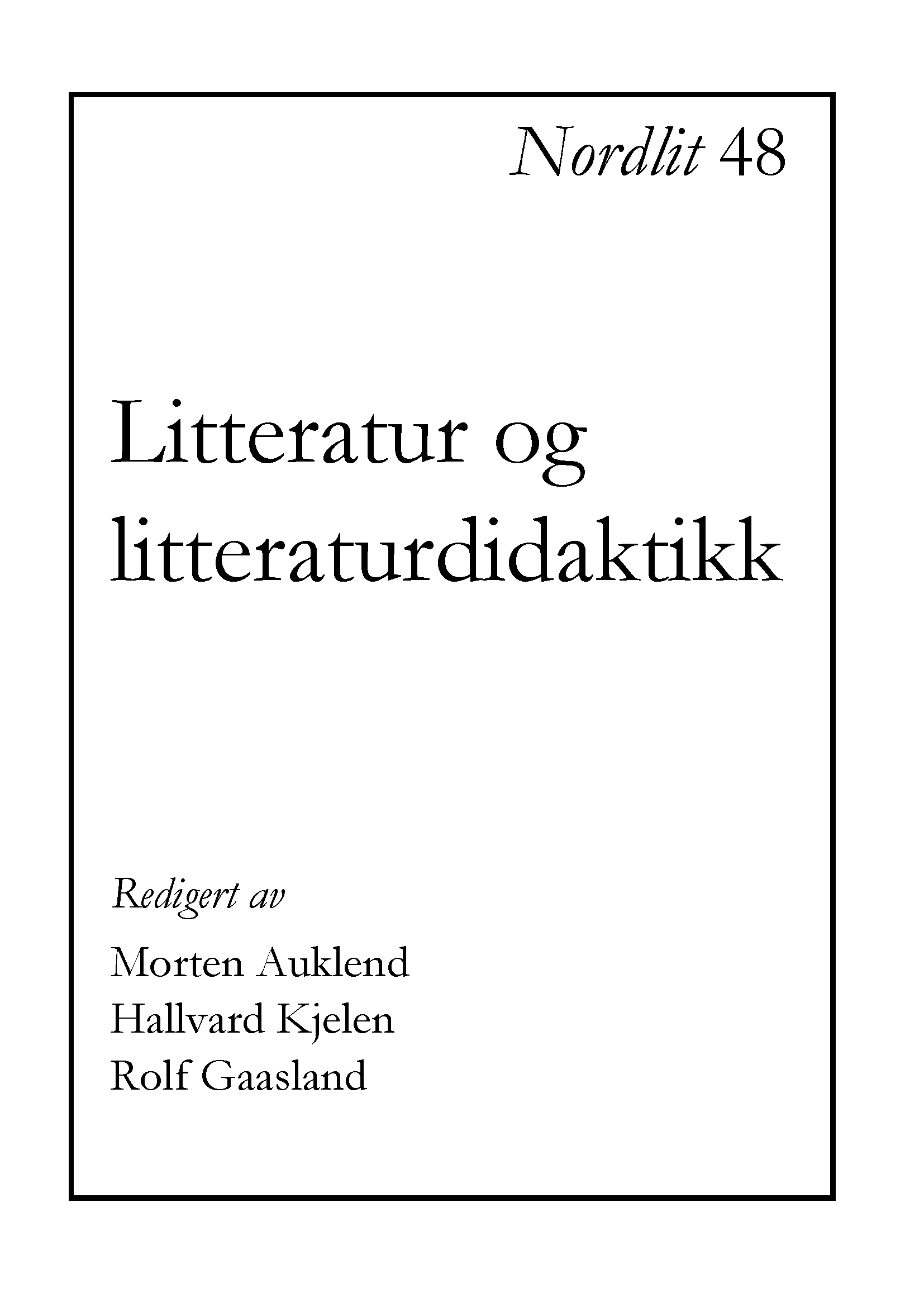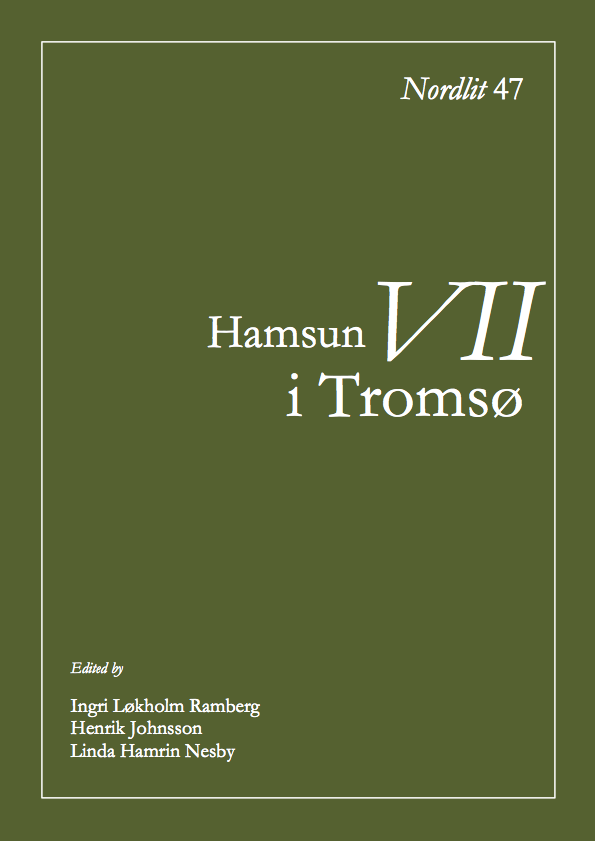Archives
-
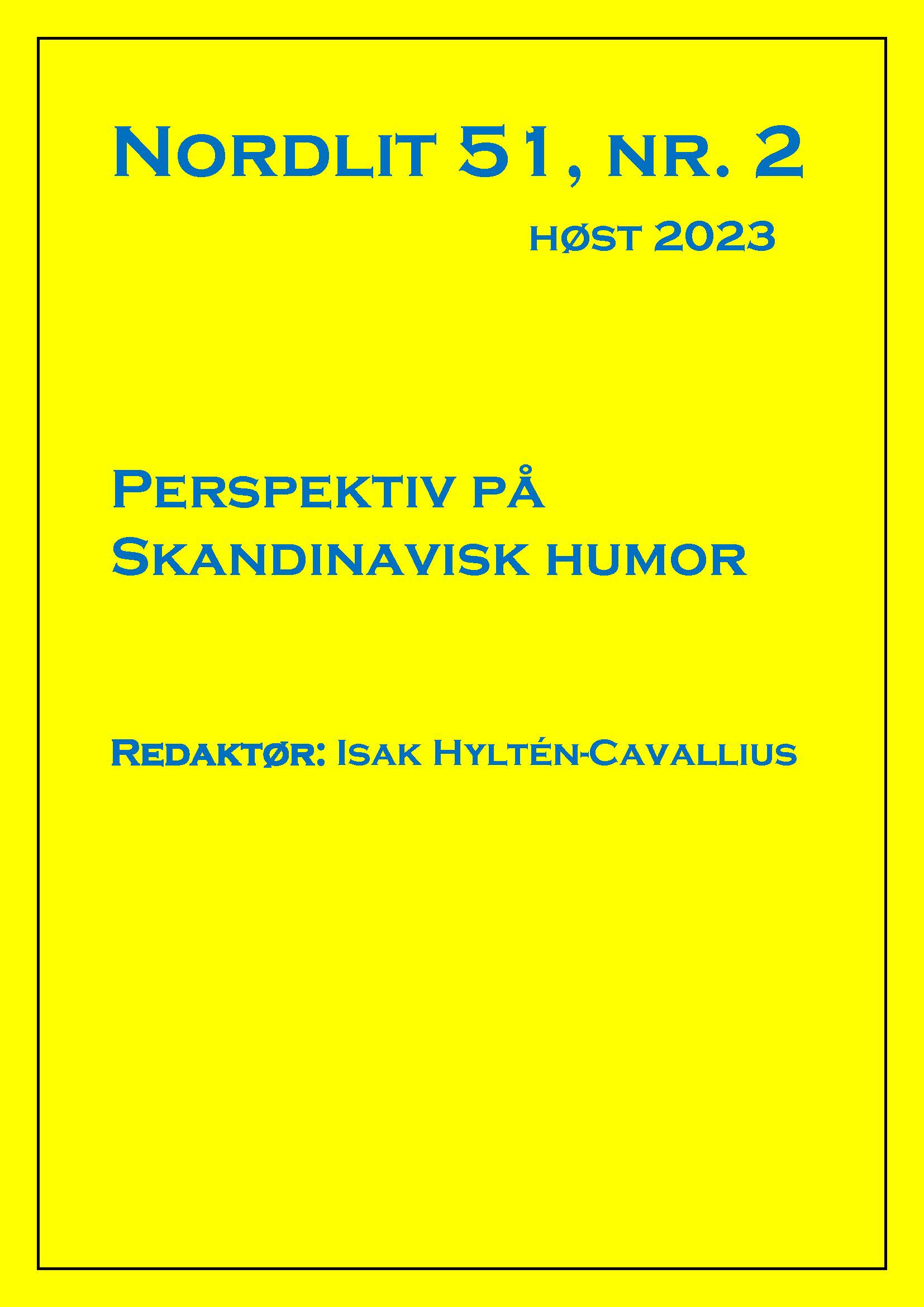
Perspectives on Scandinavian Humour
Vol. 51 No. 2 (2023)The second issue of Nordlit 2023 compiles nine articles on the theme Perspectives on Scandinavian Humour. The articles are all developed from papers held att the conference Nordic Humour in the World, arranged by Centre for Scandinavian Studies at Lund University in 2022. Lita Lundquists article examines similarities and differences between the humour of Scandinavian counties using examples from Lars von Trier’s TV-series Riget Exodus (2022). In Lars Burman’s article we are introduced to a literary material from 18th century Sweden, that was popular in its time but that is today largely forgotten. More to the point, the article concerns Johan Risell’s poetry and, specifically, his satire on the Swedish town Åmål. The article is part of a more extensive ambition to reintroduce Risell’s works in the literary history of Sweden. This article is followed by Hadle Oftedal Andersen’s, in which we are acquainted with the authors surrounding the Norwegian student journal Profil during the 1960:s and with this groups absurd brand of humour. Subsequently we find an article by Cecilie Takle, examining the development over time in three different works about Buster Oregon Mortensen. The following article is written by Jonas Lindkvist and consists of a study of masculinity and humour in the two TV-series S*M*A*S*H and Pistvakt. Following this article we find Magdalena Żmuda-Trzebiatowska’s analysis and discussion of the satirical features of Unni Drougges novel Slyngstad Events (2002), in relation to a larger discourse on the Swedish “folkhem”. Anna Smedberg Bondesson, in turn, takes as her point of departure two late collections of poetry by Kristina Lugn, and looks for the specificity of Lugns humour in the particular brand of figurative language that she finds there. Ester Jiresh, subsequently, makes the intersection between humour and feminist activism, in works by Bianca Kronlöf and Liv Strömquist, the center of attention for her article. Lastly we find an article by Christian Liliequist on humour concerning some of the most sensitive and taboo subjects one can imagine. Together these articles constitute a voluminous special issue, focused by the immersive interest in humour shared by the authors, that, at the same time, because of the numerous forms, expressions and contexts can take, is indeed vast in its scope.
-
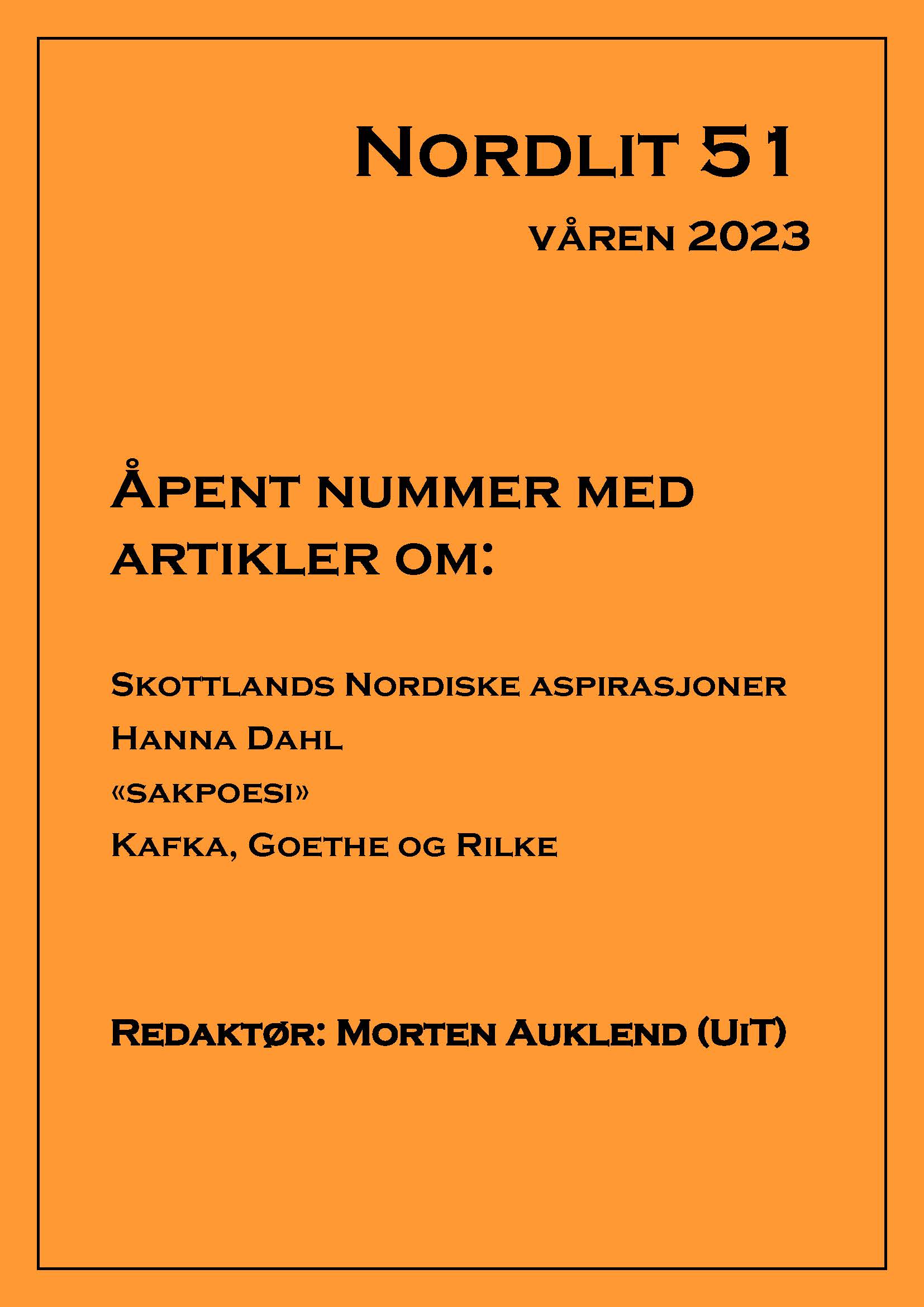
Open Issue
Vol. 51 No. 1 (2023)The 51st issue of Nordlit consists of five articles. Laila Berg explains how and why the Nordic region often is launched as a utopian ideal in contemporary political Scottish discourse, Henrik Torjusen has read Hanna Dahl’s novel Kraft as a text about dignity and the function of the archive in the context of postwar Norwegian debates on war perpetrators, and Henning Howlid Wærp comments the fairly new phenomenon «documentary poetry» in contemporary Norwegian literature via authors such as Rune Tuverud, Espen Stueland, Ingrid Storholmen, and Markus Midré. The two articles by Rolf Gaasland contain reflections on self-scrutiny in Franz Kafka’s story «A Hunger Artist» and how poetry can be understood as «space-creating» acts with readings of Goethe’s and Rilke’s poetry respectively. Enjoy the articles!
Nordlit would like to thank both the contributors and the peer reviewers, who edited and read for us all through the summer. The autumn issue will be released towards the end of the year.
-
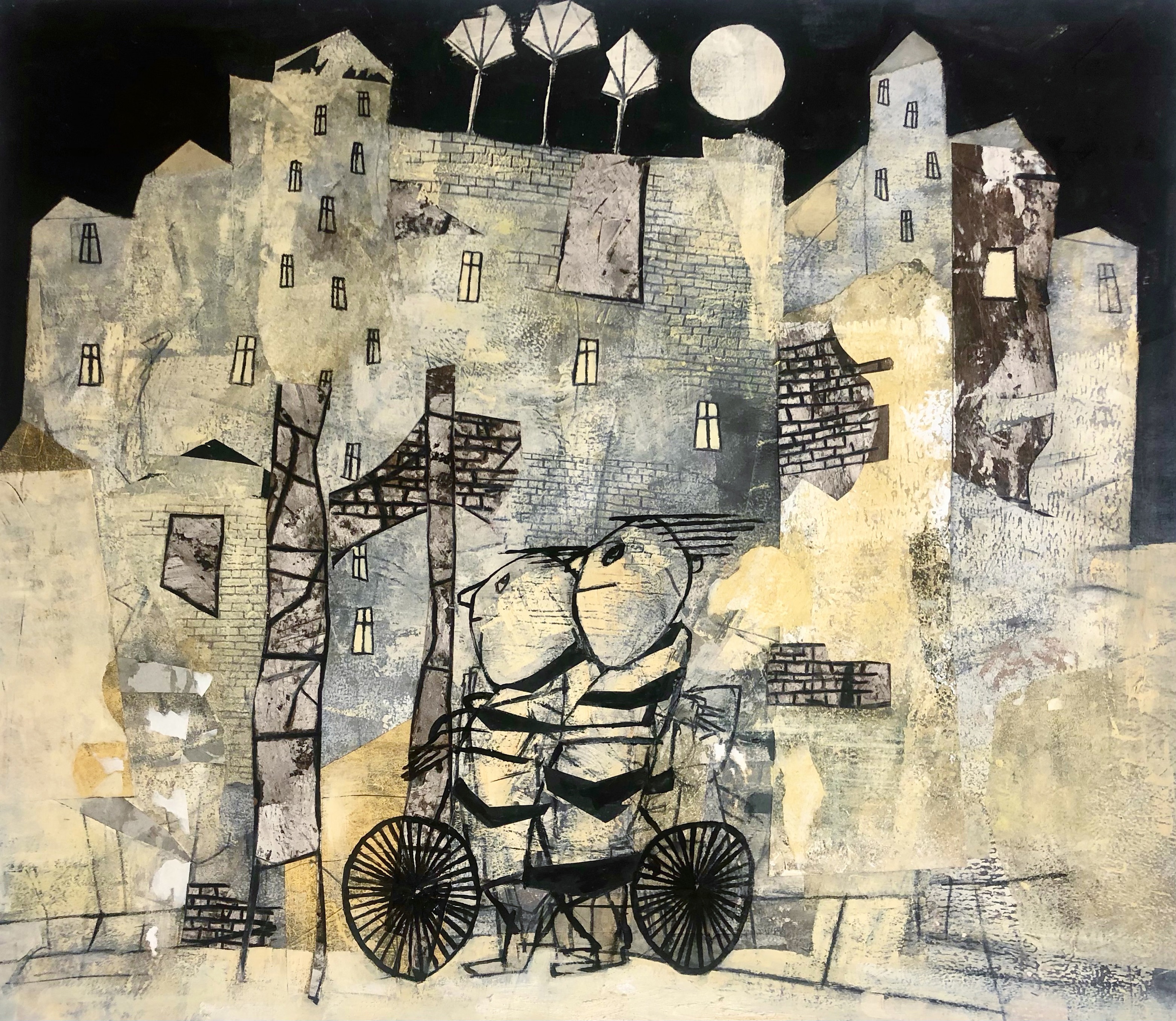
An Arctic Discovery: Articles in Honour of Marie-Theres Federhofer and Michael Schmidt
No. 50 (2022)Das Jahr 2022 steht für zwei wichtige Jubiläen: Michael Schmidt feiert seinen 70. Geburtstag und wird nach einer langen akademischen Karriere Professor emeritus. Michael ist seit nunmehr 49 Jahren der Universitäts- und Hochschulwelt verbunden und war die letzten 28 Jahre an der Universität Tromsø angestellt. Marie-Theres Federhofer wird 60 Jahre alt und kehrt nach vier Jahren als Henrik-Steffens-Professorin an der Humboldt-Universität zu Berlin auf ihre Stelle als Professorin für deutsche Literatur an die Universität Tromsø zurück, wo sie zudem als Prodekanin für Forschung an der HSL-Fakultät wirken wird. Diese Jubiläen geben reichlich Anlass zum Feiern, die wir als Freundinnen und Freunde, Kollegen und Kolleginnen, sowie als ehemalige Studierende der Beiden mit dieser Festschrift gebührend würdigen möchten.
-
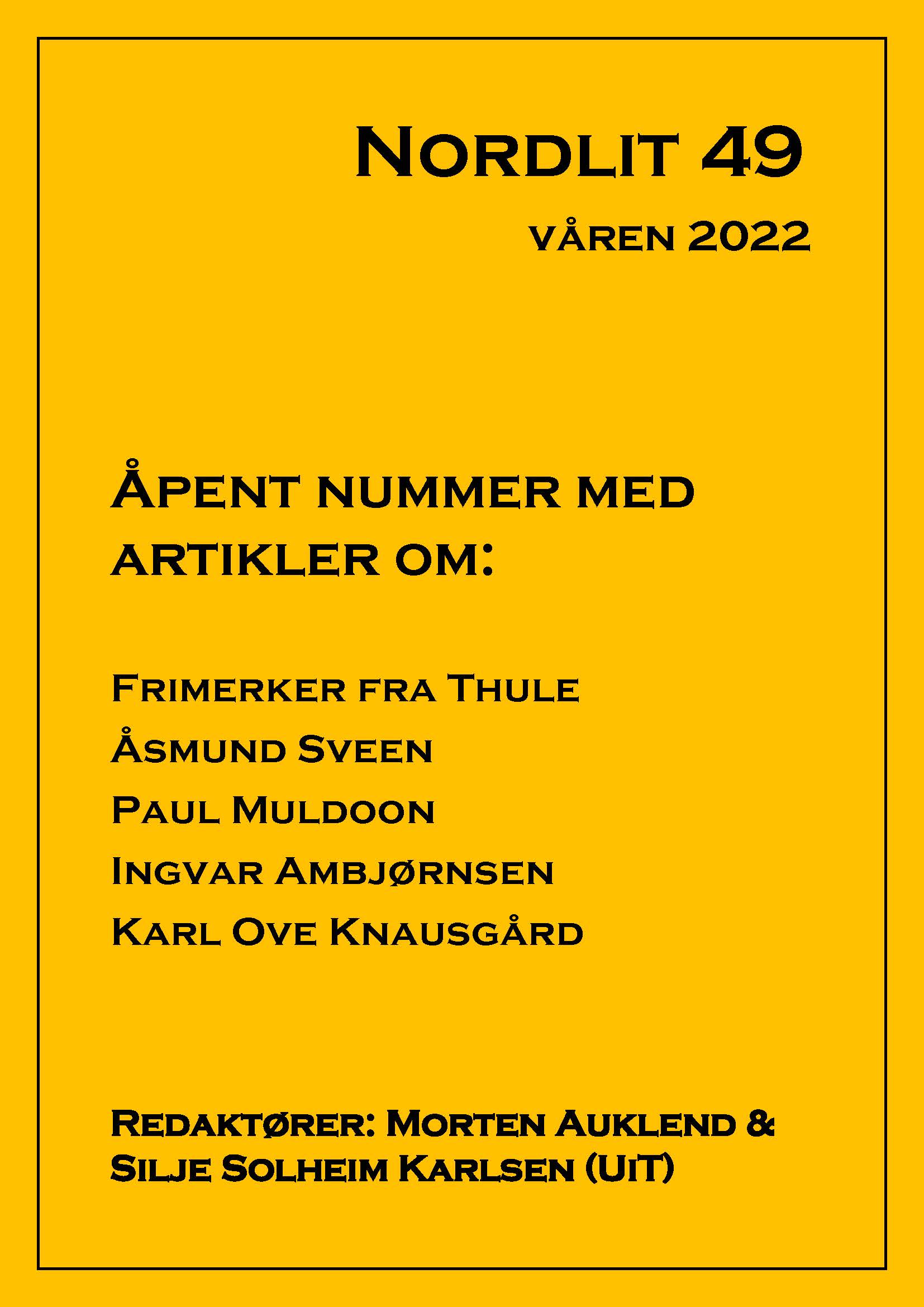
Åpent nummer
Vol. 49 (2022)The year's first Nordlit-volume consists of five unrelated articles. Anne Hemkendreis writes about Thule-stamps that circulated between Greenland and Denmark in the 1930s, Per Esben Myren-Svelstad's article is about the Norwegian author Åsmund Sveen's role as both poet and editor before and during World War II, while Ruben Moi has read the Irish poet Paul Muldoon's lyrical «translation» of the famous Celtic poem «Pangur Bán». Also, Benedikt Jager discusses the influence of drugs in various short stories and novels by the Norwegian author Ingvar Ambjørnsen, and Rikke Andersen Kraglund reads Karl Ove Knausgård's novel The Morning Star as an apocalyptic science fiction-novel. Enjoy the articles!
Nordlit will be back with a special issue in the fall of 2022.
-
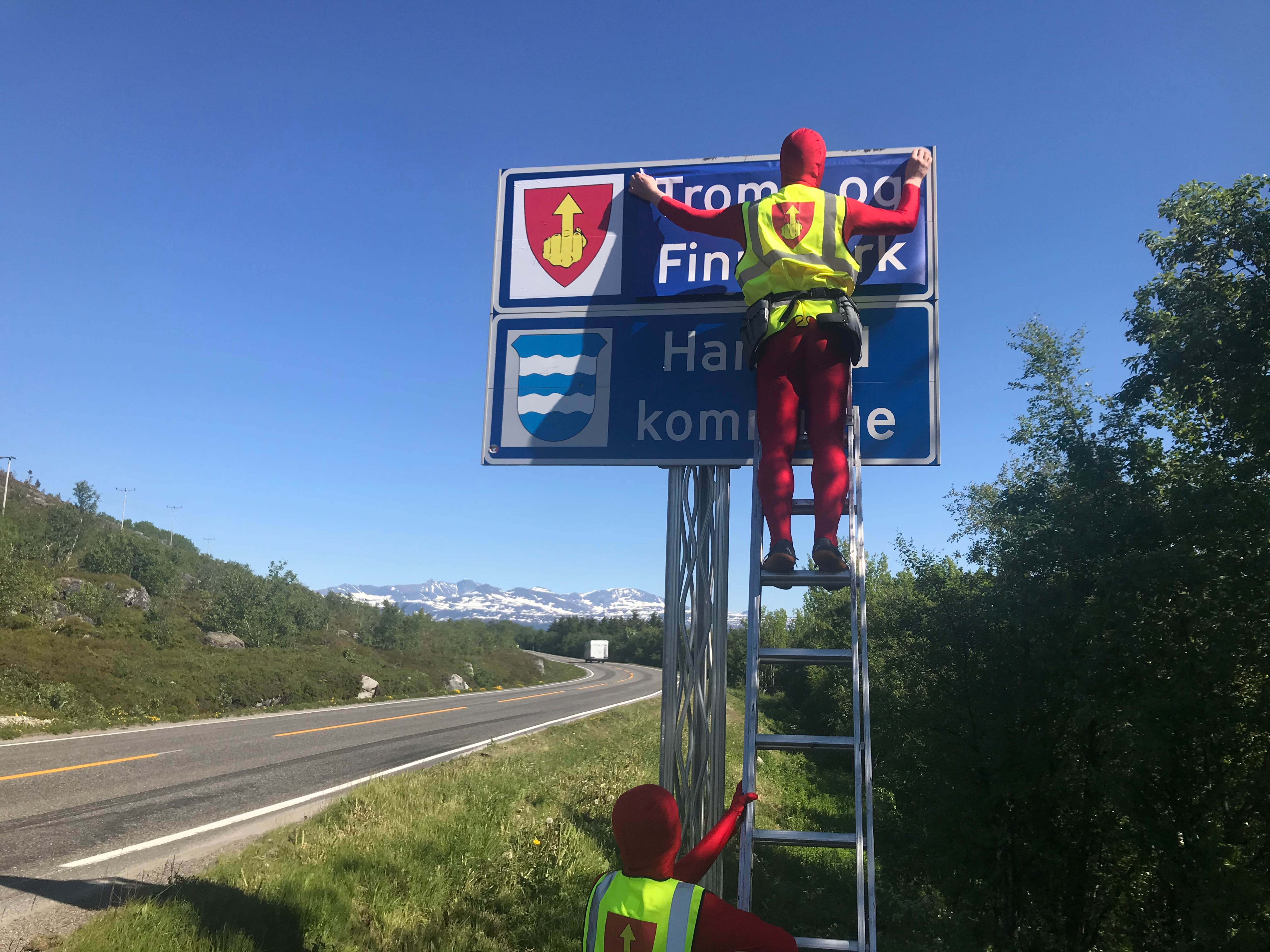
Conceptualizing the North
No. 46 (2020)Photo: ©NORDTING. Used with permission.
Edited by Kate Maxwell, Lilli Mittner, and Hanne Hammer Stien
The special issue Conceptualizing the North unites theoretical and artistic understandings of and perspectives from ‘the north’. As an area that emerges as forbidding, fragile, and fluid, with stark contrasts, the northern regions of the planet have long fascinated artists and scientists. With climate change threating the ecology of these regions, their - our - future is unknown.
The issue offers a combination of disciplines and approaches, and is deliberately broad in scope. Through its three sections, entitled ‘travelling’, ‘dwelling’, and ‘composing’, the reader is invited to conceptualize the north through visual art, music, poetry, comics, film, history, museums, sagas, and stories. From their standpoint at UiT The Arctic University of Norway, the editors’ opening article presents the north, its communities, those living and working in and on the region, as co-creative kin. We look forward to you joining us.
-
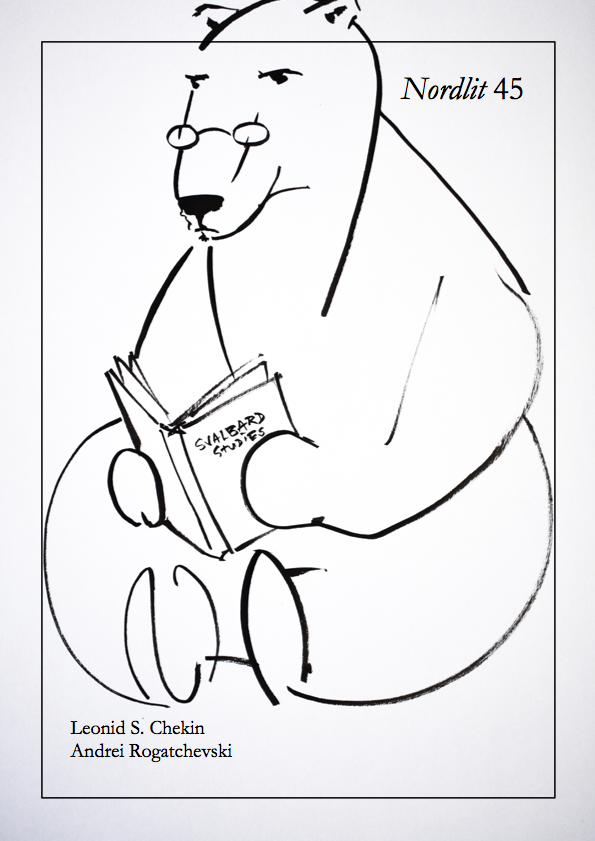
Svalbard Studies
No. 45 (2020)Edited by Leonid S. Chekin and Andrei Rogatchevski. Polar bear by Hyperstasis.
Nordlit 45 marks the 100th anniversary of the Svalbard Treaty. The Russian Space Research Group (RSCPR) notes on February 20, 2020: “Dear all, the interdisciplinary academic journal Nordlit, based at UiT The Arctic University of Norway, has just produced a special, painstakingly researched and lavishly illustrated issue […]. The issue has been guest-edited (and contributed to) by two RSCPR members, Leonid S. Chekin and Andrei Rogatchevski. Enjoy!” -
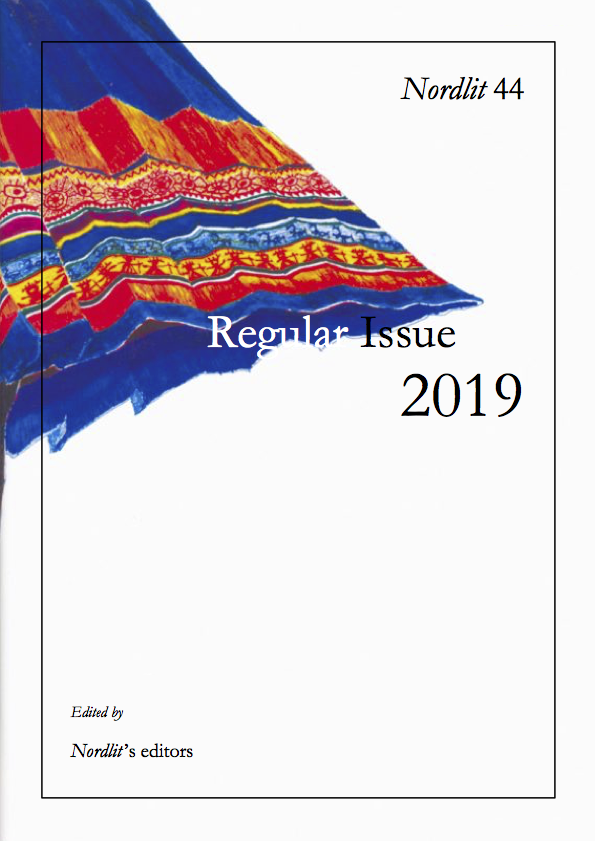
Regular Issue 2019
No. 44 (2019)Edited by Nordlit’s editors.
Nordlit 44 er et åpent nummer og artikler publiseres fortløpende. Fra redaksjonen, 23. desember 2019: «Her kommer en førjulsgave til våre lesere! Vi åpner vårt åpne nummer 44 med en duggfersk artikkel av Henrik Johnsson om Josefine Klougarts Om mørke. Flere flotte artikler kommer på nyåret. God jul.»—Fra redaksjonen, 22. januar 2020: «Ny artikkel fra Rolf Gaasland! ‹Forfatternes gjerninger: Upålitelig narrasjon i T.S. Eliots Journey of the Magi?› ligger nå tilgjengelig på nett. Anniken Greves ‹I begynnelsen: Noen betrakninger om ord, landskap og poetologi› kan nå leses på nettsiden vår. Obligatorisk lesning for alle som interesserer seg for språk, landskap, Wittgenstein eller Nils-Aslak Valkeapää!»
Gákti design: © Valkeapää, Nils-Aslak. 1972. Trekways of the Wind—Ruoktu Vaimmus. Kautokeino/Guovdageaidnu: DAT. -
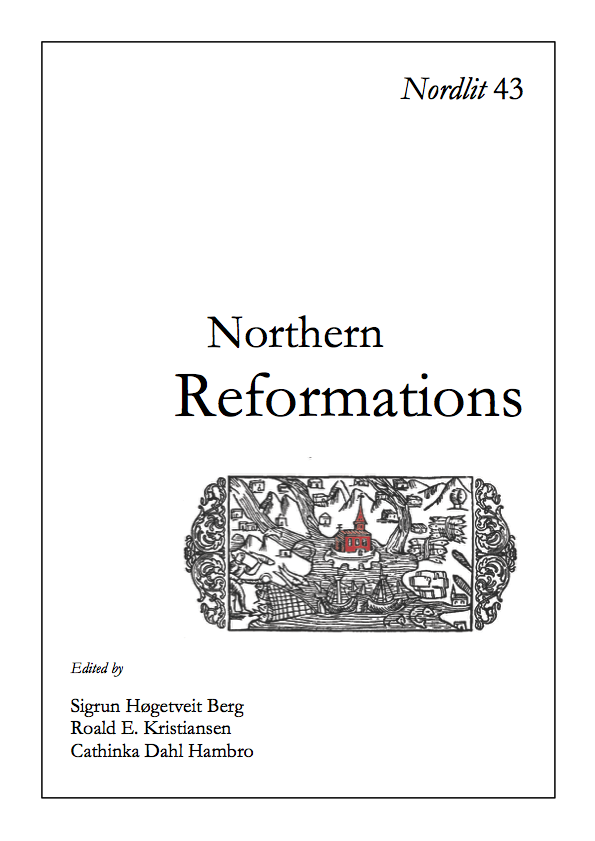
Northern Reformations
No. 43 (2019)Edited by Sigrun Høgetveit Berg, Roald E. Kristiansen, and Cathinka Dahl Hambro. Red-church graphic by Torje Jenssen.
Nordlit 43 asks: What did the protestant reformations look like in the very North of Europe? How did the cultural, political and economic consequences of the religious change influence the relationship between Scandinavia, the British Isles and continental Europe? Various questions related to these main themes were the topics for discussions at the conference ‘Northern Reformations’ in Tromsø, September 21–22, 2017. This volume contains papers based on most of the conference contributions. -
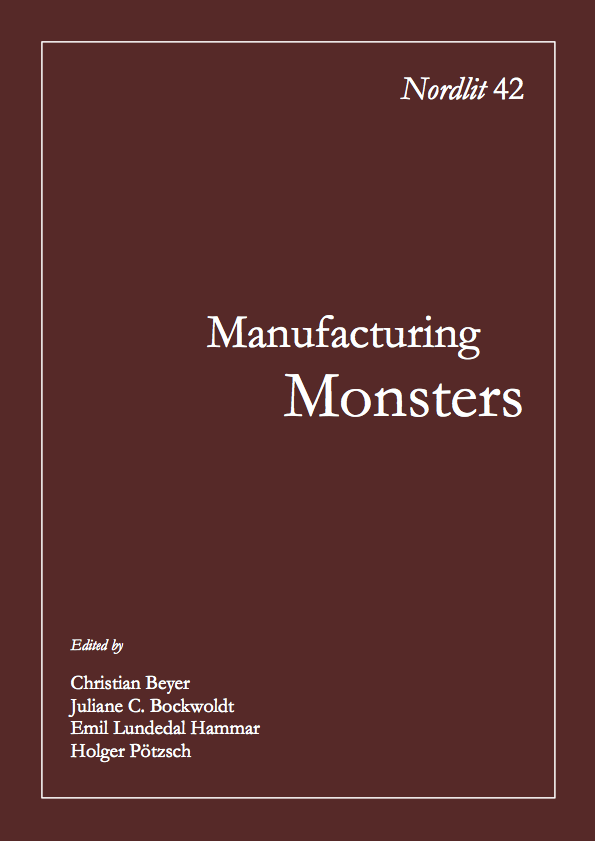
Manufacturing Monsters
No. 42 (2019)Edited by Christian Beyer, Juliane Bockwoldt, Emil Hammar, and Holger Pötzsch. Layout: Chrill.
Nordlit 42 maps the manufacturing of monsters across media and genres. -
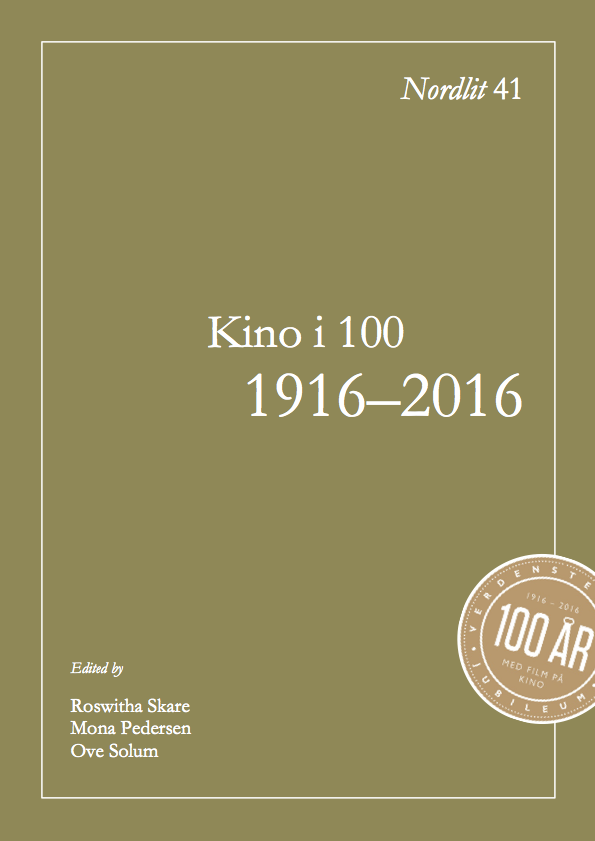
Kino i 100
No. 41 (2019)Edited by Roswitha Skare, Mona Pedersen, and Ove Solum. Logo: © Verdensteatret.
Nordlit 41 watches one hundred years of cinema. -
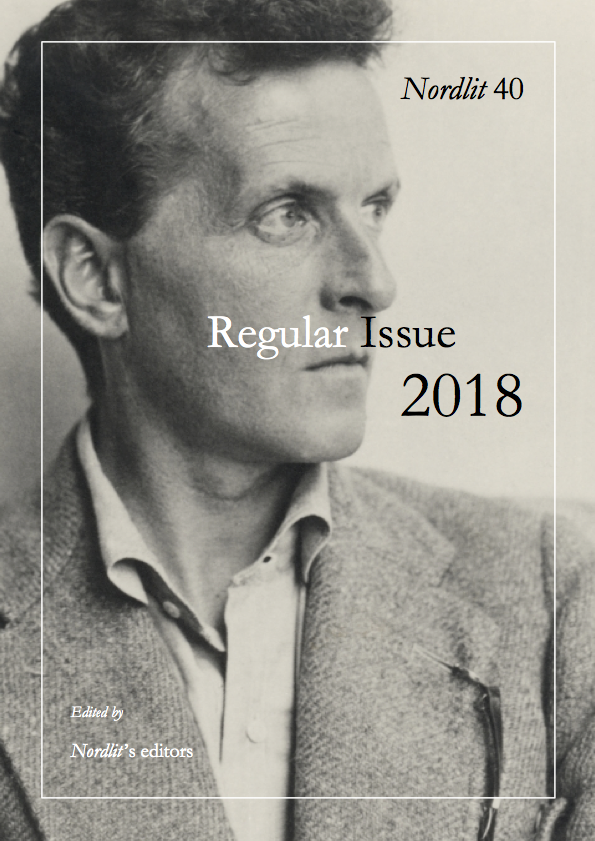
Regular Issue 2018
No. 40 (2018)Edited by Nordlit’s editors. Photography: © Österreichische Nationalbibliothek—Ludwig Wittgenstein [1899–1951] (1930); inventory number Pf 42.805: C(1).
Nordlit 40 er et åpent nummer og artikler publiseres fortløpende. Fra redaksjonen: «Først ut er John Brumo med ‹Hamsunproblemet i skolens norskbøker 1945–1970›. God lesning!»—24. august 2018: «Da er Laura Castors artikkel ‹Louise Erdrich’s The Round House: Restorative Justice in a Coming of Age Thriller› publisert. Perfekt lesning for en fin høstkveld!» -
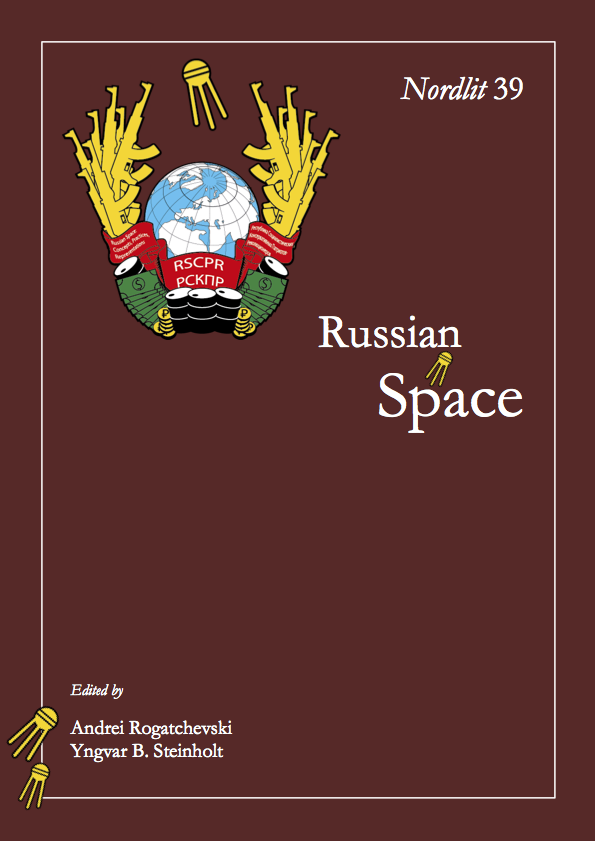
Russian Space—Concepts, Practices, Representations
No. 39 (2017)Edited by Andrei Rogatchevski and Yngvar B. Steinholt. РСКПР–Спутник logo: Arve Hansen.
Nordlit 39 charts: Spanning more than 17 million square kilometers, the Russian Federation covers an expanse bigger than any other country on Earth, and houses a population of over 144 million people and 170 ethnic groups. Even before considering Russia’s rich and complex history, these facts alone go a long way in explaining why the concept of Russian space and its meaning represent a major challenge not only for the outsider, but also for the citizens of Russia themselves. Most of the articles which make up the current special issue have been developed from presentations at the monthly seminar of ‘Russian Space: Concepts, Practices, Representations’ (RSCPR), an interdisciplinary research group formed at UiT The Arctic University of Norway in 2015. The group approaches the notion of space in accordance with new spatial history, which stresses the subjectivity of space construction. -

Hamsun i Tromsø VI
No. 38 (2016)Edited by Henning Howlid Wærp and Even Arntzen.
Nordlit 38 presents the proceedings from the 6th International Hamsun Conference. Fra redaksjonen, 28. april 2016: «Nordlit nummer 38 inneholder 20 artikler fra Den 6. internasjonale Hamsun-konferansen som ble arrangert i Tromsø høsten 2015. Blant artikkelforfatterene var hele fem doktorgradsstudenter fra Norge, Tyskland og Romania—noe som illustrerer interessen for Hamsuns forfatterskap også blant yngre forskere.» -
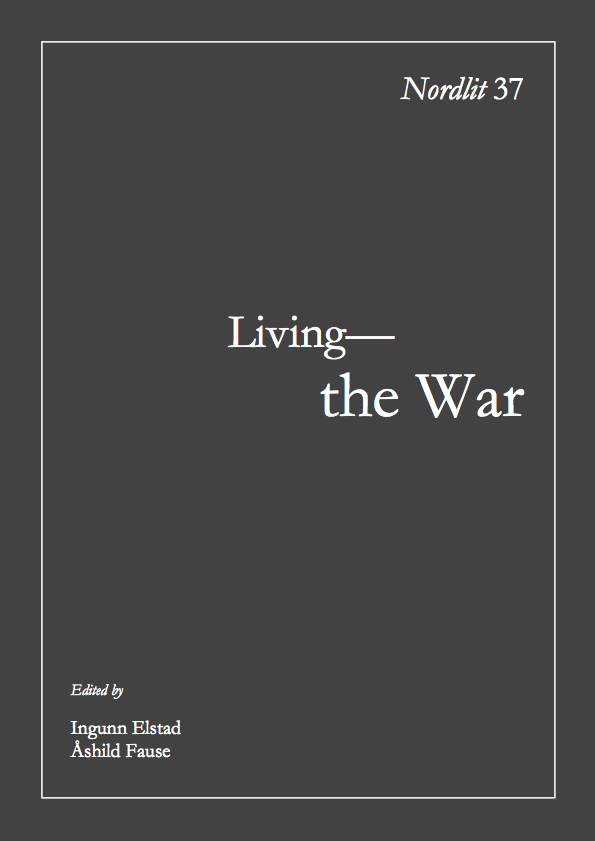
Living the War
No. 37 (2015)Edited by Ingunn Elstad and Åshild Fause.
Nordlit 37 presents the research project ‘Living the War’. Its focus is the impact of the Second World War on health and daily living conditions for the population in the North-Western part of Europe. Fra redaksjonen, 22. desember 2015: «Nordlit nummer 37 handler om levekår og helse i nordområdene under 2. verdenskrig og etter gjenreisningen. Artiklene er knyttet til prosjektet ‹Living the War› som viser hvordan det var å leve under krigen i Finnmark og hvordan befolkningen overlevde. Bidragsytere er Åshild Fause, Ingunn Elstad, Nina Planting Mølmann, Bjarne K. Jacobsen, Heidi Stenvold og Ingrid Immonen. Og så: Nordlit har fått ny redaksjon. Hovedredaktør er professor i tysk litteratur og kultur ved UiT Norges arktiske universitet, Michael Schmidt. De øvrige redaksjonsmedlemmene er Katarina Bernhardsson, Universitetet i Lund, Henrik Gustafsson, UiT og Linda Hamrin Nesby, UiT.» -
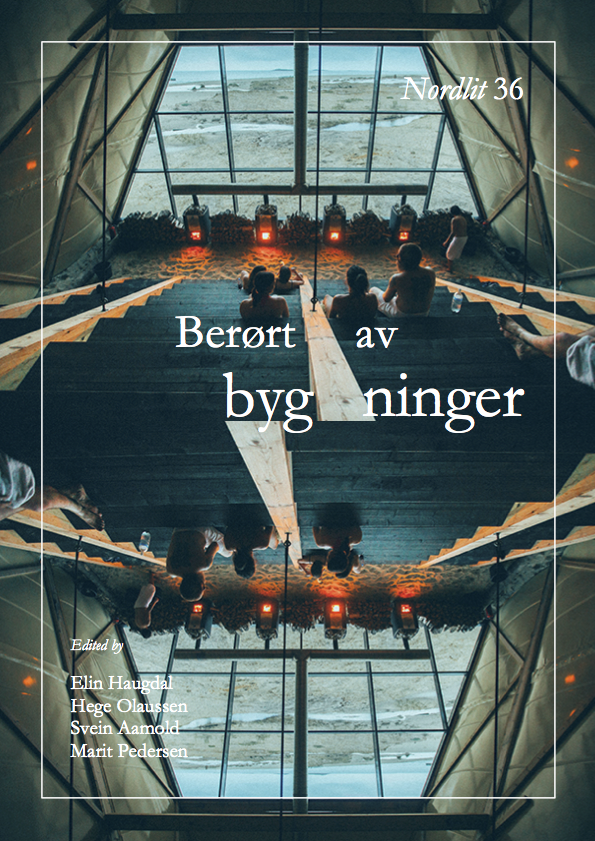
Berørt av bygninger
No. 36 (2015)Edited by Elin Haugdal, Hege Olaussen, Svein Aamold and editorial staff. Photography: © Losvik, Martin. 2014. Art Project Agora Sauna. Sandhornøya i Gildeskål: SALT.
Nordlit 36 er et festskrift for professor Ingebjørg Hage. 16 forskere har bidratt med artikler om bygninger og arkitekter, forskning og bevaring, og arkitektur som ramme om liv og kult. Elin Haugdal skriver 4. januar 2016: «16 norske og svenske forskere har bidratt med artikler om bygninger og arkitekter, forskning og bevaring, og arkitektur som ramme om liv og kult. Det er godt illustrerte artikler om bl.a. Ekebergparken—landskap og demokrati, Hesteskoblokka i Hammerfest, ‹hus som har kommet i knestående› og relikivet i Torsken kirke.» -
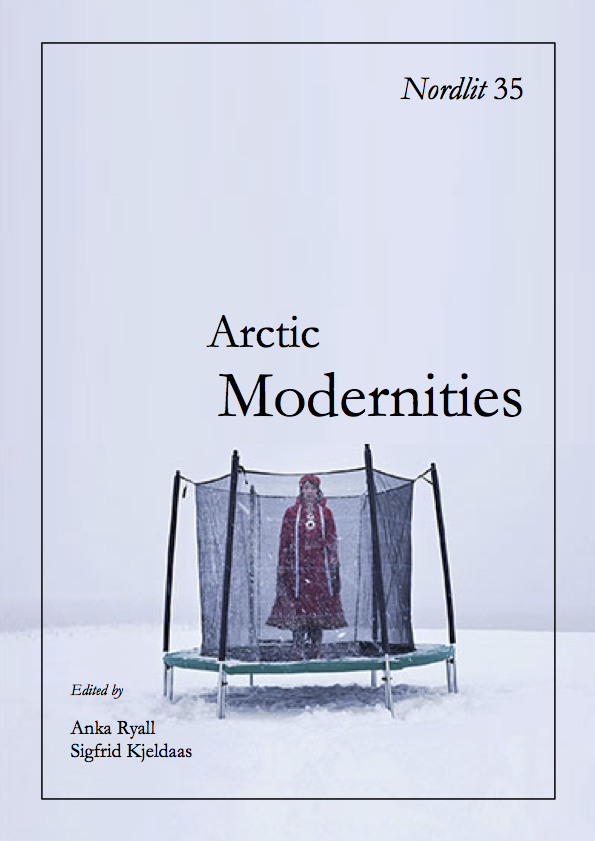
Arctic Modernities
No. 35 (2015)Edited by Sigfrid Kjeldaas and Anka Ryall. Dedicated to Fredrik Chr. Brøgger. Cover image by Marja Helander.
Nordlit 35 is dedicated to Fredrik Chr. Brøgger, Professor Emeritus of American Literature and Culture, on his 70th birthday on April 23, 2015. With one exception, all the contributors—like Fredrik himself—are members of the international research project ‘Arctic Modernities’, funded by the Polar Research Programme of the Research Council of Norway, with additional funding from the Faculty of Humanities, Social Sciences and Education at UiT The Arctic University of Norway. Some of the contributors, including one of the editors, have also been Fredrik’s colleagues at UiT for many years. Others have been his students. Others again have collaborated with him in various capacities. All are happy to consider themselves his friends. […] The ‘Arctic Modernities’ project, like the contributions in this issue of Nordlit, examines ‘instances’ of Arctic modernity, often in light of the past. As a whole, the articles seem to bear out what we emphasised in our grant application to the Research Council, namely that the modern Arctic seems to have a double discursive signification. On the one hand—for those of us who live and work in the North—it signifies something accessible, everyday and prosaic; on the other, it is a ‘never–never land’ of romance and adventure. […] One hypothesis linking many of the contributions to the ‘Arctic Modernities’ project is that discourses of the Arctic embody the ‘paradoxes’ of modernity. For this reason, we believe that a study of the discursive significations of the modern Arctic may also throw light on general processes of modernisation. […] The editors want to thank Ketil Zachariassen, head of the Department of Literature and Culture at UiT, and Michael Schmidt, editor-in-chief of Nordlit, for their support of this project. Thanks also to Per Pippin Aspaas and Jan Erik Frantsvåg for advice, to Torunn Berger for many forms of practical assistance, to Elin Haugdal for providing the cover photograph, and to Bjørn Hatteng for designing the cover. All the authors deserve special thanks, both for their positive response to our call for contributions to this issue of the journal and for keeping our very strict deadlines. Finally, thank you, Fredrik, for being so genially and cheerfully in our midst. Have a pleasant read. -
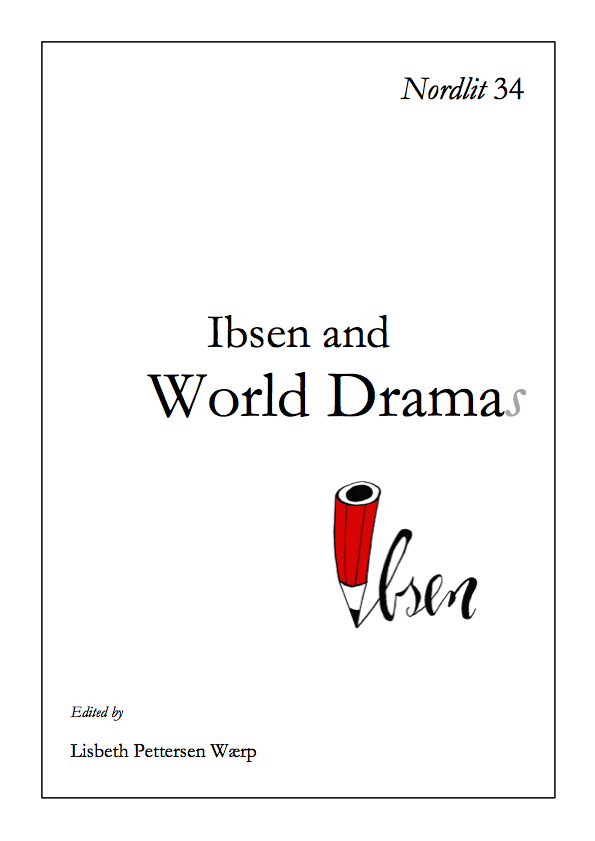
Ibsen and World Drama[s]
No. 34 (2015)Edited by Lisbeth Pettersen Wærp. Cover image by Nomen nominandum.
Nordlit 34 makes available the proceedings of the XIIIth International Ibsen Conference that was held in Tromsø on June 18–23, 2012, by UiT The Arctic University of Norway, in cooperation with The Ibsen Centre of the University of Oslo and The International Ibsen Committee. With 160 registered participants and 120 papers presented, the conference was one of the biggest international Ibsen conferences that has been held, with participants from over 40 nations and from all continents. The theme of the conference was ‘Ibsen and World Drama(s)’. Keynote speakers were Martin Puchner, Harvard University, Boston, USA; Nuruddin Farah, author, Somalia/South Africa; Sun Jian, Fudan University, Shanghai; and Narve Fulsås, UiT The Arctic University of Norway. In addition, there were two keynote panels: [i] ‘Translating Ibsen’ and [ii] ‘Inaugural Artists Keynote Panel: Applied Ibsen on Four Continents’. This was the first artist panel ever at The International Ibsen Conference, and the aim was to strengthen the dialogue between practitioners/artists and theorists/scholars. The inaugural artists keynote panel was a great success, and it is our hope that it will prove to be the first of a series. The forty-six articles printed in this volume of Nordlit are a selection of the papers presented at the conference. Whereas the conference programme was loosely organized around subtopics related to the overall conference theme, we have here divided the articles in the following groups: [i] Keynotes, [ii] Literature, [iii] Theatre, [iv] Film, [v] Reception, and [vi] Translation. In the end, there is a poem by Henning Howlid Wærp. Have a pleasant read. -
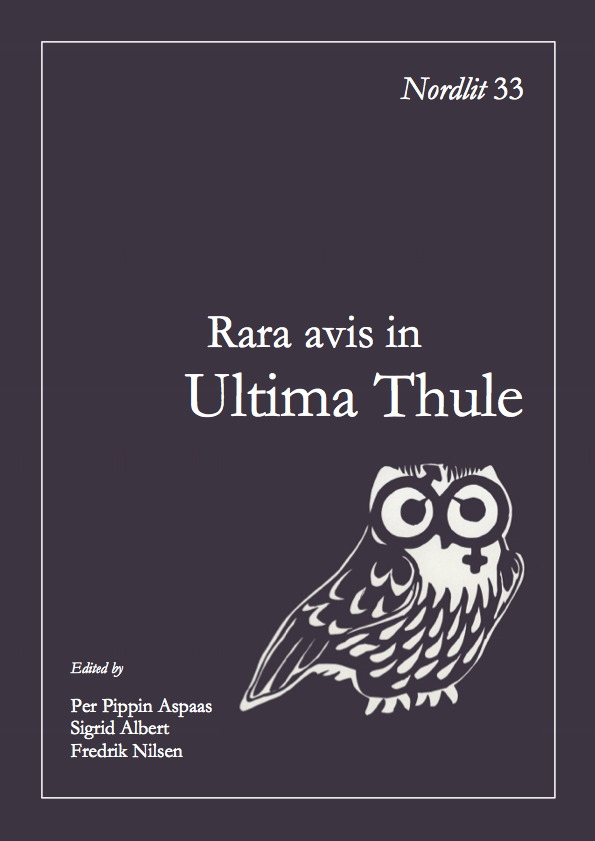
Rara avis in Ultima Thule
No. 33 (2014)Edited by Per Pippin Aspaas, Sigrid Albert (Saarbrücken), and Fredrik Nilsen. Paper-cut owl by Synnøve des Bouvrie and Sigmund Nesset.
Nordlit 33 est libellus festivus Sunnivae des Bouvrie dedicatus. ‘Rara avis in Ultima Thule’ (A rare bird in Ultima Thule) is a Festschrift dedicated to Synnøve des Bouvrie. Apart from the introduction, all the Festschrift is divided into four parts, one of which is occupied by researchers of myths, the other by philosophers and scholars of literature, the third by those who work on the history of what in their own language is called ‘Nordområdene’, ‘Pohjoiset alueet’ or ‘Davviguovllut’, or ‘Thule’ in Latin, while those who promote the study of living Latinity occupy the fourth. All these differ from each other in language, customs and laws. Thus, there are twelve articles in English, seven in Latin, four in Norwegian and a single article in each of the languages French, North Sami and Swedish. Furthermore, one author represents Transalpine Gaul; another, Upper Germany; a third, the ancient seat of the House of Habsburg; a fourth, the people that the Norwegians call ‘söta bror’ (sweet brother), i.e., the Swedes; a fifth, the Danes that are (almost) identical to those whom Laocoon feared “even when bringing gifts”; two further authors are from the so-called ‘horned Finns’, yet another represents those who according to Caesar are “the bravest of all these”, namely, the Belgians; then, there are four affiliated to universities in those ‘new worlds’ that Tethys revealed; and finally, from institutions of higher learning within Norway altogether fourteen authors have contributed to this book. […] Above all, we wish to thank Synnøve for her relentless efforts over the years, in which she has taught, researched and disseminated knowledge about classical languages and culture. The Department of Culture and Literature at the UiT with head of department Ketil Zachariassen and administrative leader Beathe Paulsen deserve special thanks for supporting the project; so does the journal Nordlit with Editor-in-Chief Michael Schmidt; and Sigmund Nesset for providing scannings of various images as well as designing the [printed] front cover. Last, but not least, we thank all authors for their rewarding collaboration. Gaudeamus igitur! -
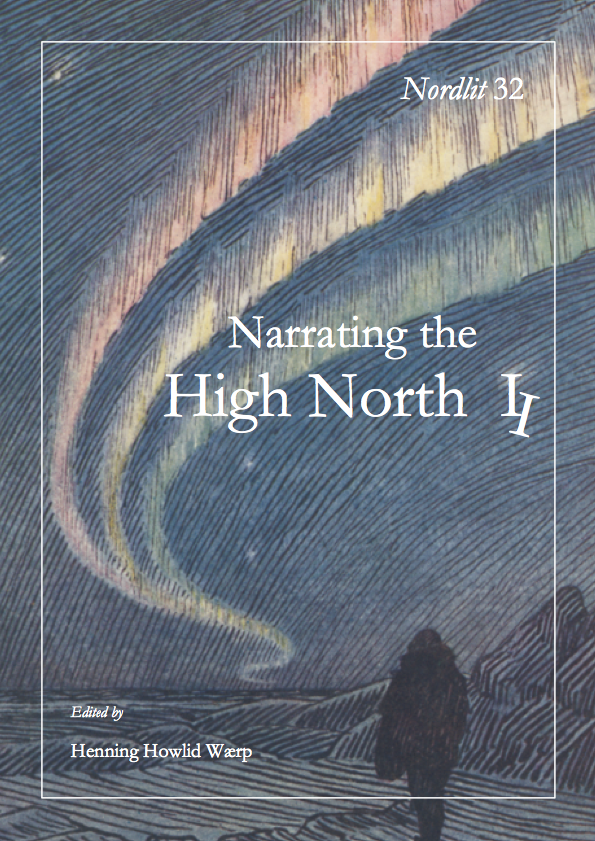
Narrating the High North II
No. 32 (2014)Edited by Henning Howlid Wærp. Cover image by Fridtjof Wedel-Jarlsberg Nansen.
Nordlit 32 er det andre temanummeret fra forskningsgruppen ‹Narrating the High North› ved HSL-fakultetet, UiT Norges arktiske universitet. Det springer ut av et symposium ved Barentsinstituttet i Kirkenes i juni 2013, der formålet var å la forskere ved Barentsinstituttet, som nå er en del av UiT, møte kolleger innen humaniora og samfunnsvitenskap fra campusen i Tromsø. ‹Narrating the High North› er et tverrfaglig prosjekt for nordområdestudier med fokus på politikk, samfunn og kultur, basert på de tre forskningsgruppene [i] ‹Arktiske diskurser›; [ii] ‹Norsk polarpolitikk 1870–2014›; og [iii] ‹Making Sense of the Aurora: Historical Studies of the Northern Lights in Scientific and Cultural–Political Contexts›, alle ved HSL-fakultetet, UiT. De to siste gruppene er ledet av henholdsvis Einar-Arne Drivenes og Robert-Marc Friedman, mens ‹Arktiske diskurser› er ledet av Anka Ryall, Johan Schimanski, og Henning Howlid Wærp. Målet med ‹Narrating the High North› er å bidra til å forstå de grunnleggende endringsprosessene som skjer i nordområdene, og å synliggjøre og fornye den ikke-naturvitenskapelige polarforskningen som gjøres ved Universitetet i Tromsø. I et oppslag i Aftenposten 12. april 2013, om nyere trender i polarforskningen, kunne man lese følgende: «Flere Aftenposten har snakket med mener at vi vet nok om isbjørn og sel. Nå må det forskes mer på menneskers gleder og sorger i et skiftende Arktis». En lignende tankegang finner en i boka Nordområdene sett fra nord, fra 2010, redigert av Elisabeth Angell, Sveinung Eikeland, og Per Selle, som mener at regjeringens satsning på nordområdene siden 2005 først og fremst har vært innen næringspolitikk, og at honnørord som urfolk, økologi og folk-til-folk-samarbeide først og fremst har vært…—ja, nettopp—honnørord. Og at kunnskapssatsningen, som av myndighetene er erklært som navet i nordområdepolitikken, også først og fremst har vært næringsrettet. Det har vært lite fokus på myke sektorer, og på den innvirkning på liv og arbeid i nord som nordområde-satsningen vil ha. I tillegg er det generelt lagt lite penger i potten, på tross av store ord. Likevel er oppsummeringen til Per Selle, professor i sammenlignende politikk, trolig riktig når han sier om nordområde-satsningen: «Vi bør likevel ikkje undervurdera sjølve den kognitive nyorientering mot nord—både hos sentrale styresmakter og internt i regionen (auka sjølvkjensle). Det kan opna for nye idear og nye måtar å gjera ting på […] som ein elles ikkje hadde sett føre seg […]» (Angell/Eikeland/Selle 2010: 378). Det å undersøke endringer i den kognitive horisonten når det gjelder det nordlige, både historisk og samtidig, i Norge og internasjonalt, er slike ting forskningsgruppen ‹Narrating the High North› ved HSL-fakultetet på Universitetet i Tromsø driver med. God lesning! -
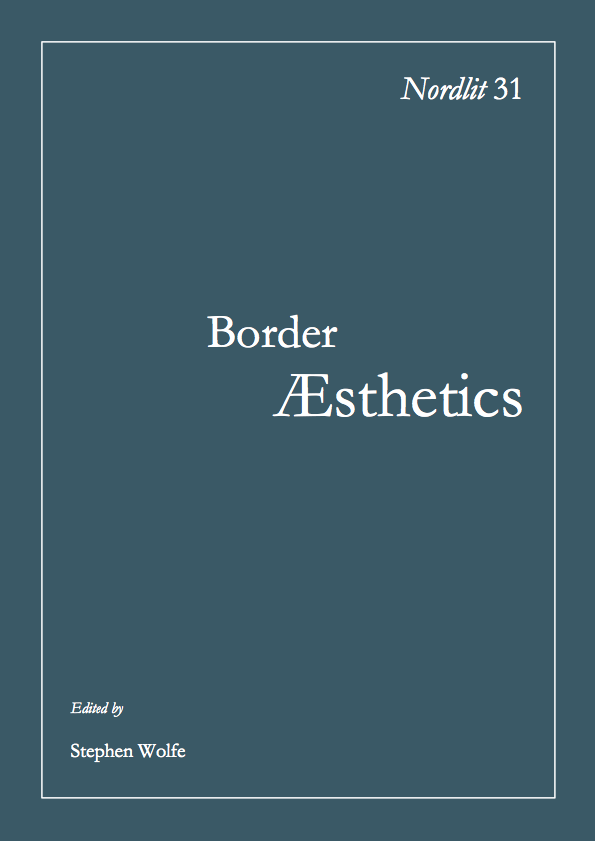
Border Æsthetics
No. 31 (2014)Edited by Stephen Wolfe.
Nordlit 31 consists of essays that were first presented as papers at the ‘Border Æsthetics’ conference held at the University of Tromsø in September 2012. The conference built on continuing work at UiT—the ‘Border Poetics/Border Culture’ research group—and was the final conference of the ‘Border Æsthetics’ research project funded by the KULVER research programme of the Research Council of Norway and the University of Tromsø (2010–2013). The conference attracted fifty-three registered participants, including literary scholars, political geographers, historians, anthropologists, folklorists, linguists, media scholars, urban planners, architects; and students. Regional authors, performing artists, filmmakers, and artistic producers also took part in a special panel. […] Paper topics addressed the negotiation of borders—in photography, political satire, feature films, artistic happenings, literary fiction, poetry, theatre performances, local communities, urban spaces, architecture, magazines, and life stories. Papers also addressed questions about the æsthetic dimensions of: the visibility/invisibility of borders, culture borders and diaspora, waiting at borders, the borders of the subject, ecological borders, the economic crisis, and sovereignty. […] The aim of the conference was to ‘investigate how changing perceptions of borders relate to shifting æsthetic practices’. In so doing, the conference drew upon two guiding observations that inform any notion of a ‘border æsthetics’, these being [i] that æsthetic theories and practices regularly invoke and engage with notions of the border; and [ii] that borders are in turn capable of producing æsthetic effects and can themselves be conceived of as æsthetic objects. Indeed, one of the principal goals of the project, the conference, and of some of the essays that appear here are to establish a new ‘æsthetics of space/place and location’. It is of a kind likely to be required when studying divergent groups, objects, values and activities that inhabit and pass through border zones. […] Central to a number of the essays is an emergent and not fully-defined term in border studies, the ‘borderscape’—a wide material and virtual field constituted by ‘re/de/bordering’ processes and æsthetic representations of the border; used to map the relations of borders to power, resistance, connection, and reformulation. The ‘borderscape’ with its suggestion of a topography defined through perspective connects power directly to visibility in a way discussed in recent theories of æsthetics (see, for example, Rancière 2013 [2004]). Have a pleasant read.
Rancière, Jacques. 2013 [2004]. The Politics of Æsthetics: The Distribution of the Sensible. Translated by Gabriel Rockhill. Revised edition. London/New York: Bloomsbury. -
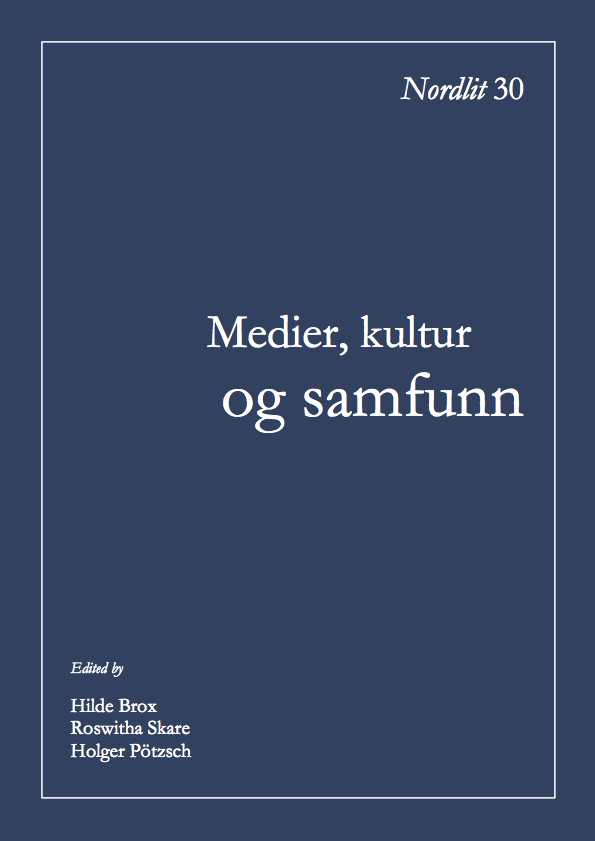
Medier, kultur og samfunn
No. 30 (2012)Edited by Hilde Brox, Roswitha Skare, and Holger Pötzsch.
Nordlit 30 fører sammen bidragsytere med bakgrunn fra forskjellige disipliner og fagfelt. De fleste forskerne som bidrar her er i dag løselig organisert i forskningsgruppa DOMINO ved Fakultetet for humaniora, samfunnsvitenskap og lærerutdanning, Universitetet i Tromsø. Denne forskningsgruppa avholder jevnlige tekstseminarer og symposia og fungerer som knutepunkt mellom pågående og planlagte forskningsprosjekter. Publikasjonen ‹Medier, kultur og samfunn› hadde sitt utspring i et symposium ved UiT i mars 2012. Ett av formålene med dette temanummeret er å gi en oversikt over medierelatert forskning ved fakultetet og å motivere til dialog og fremtidig samarbeid utover institusjonelle og disiplinære grenser. Bidragsyterne er tilknyttet forskjellige institutter og sentre ved HSL-fakultetet; de står for litteratur-, kultur-, film- og medieteoretiske, språkvitenskapelige, mediedidaktiske, religionsvitenskapelige, diskursteoretiske, historiske og teknologiske innfallsvinkler til sine respektive problemstillinger. Utvalget viser bredden i den pågående forskningen ved fakultetet og minner samtidig om mulighetene og utfordringene et samarbeid på tvers av forskningsmiljøene kan innebære. De publiserte bidragene lar seg kategorisere med hensyn til deres empiriske vinkling—én bolk fokuserer på måten kulturelle uttrykk, og især film, øver innflytelse på historieforståelse og ‹kollektivt minne›, mens en annen tar opp forholdet mellom minoriteter og moderne massemedier. En tredje gruppe kaster et kritisk blikk på politisk vinkling i nyhetsmedier, mens en fjerde bolk ser på forholdet mellom digitale medier og samfunn. Til slutt tar en femte gruppe for seg noen problemstillinger knyttet til oversetting og ‹remediering›. Sammen synliggjør de et grunnlag for fremtidig medievitenskapelig forskning på tvers av fagspesifikke og institusjonelle begrensninger. Nummeret er altså delt i fem tematiske bolker: [i] ‹Film og historie›; [ii] ‹Medier og minoriteter›; [iii] ‹Nyhetsdiskurser›; [iv] ‹Digitale medier og samfunn›; og [v] ‹Oversettelse og ‹remediering››. […] Herved viser temanummeret noe av den medievitenskapelige forskningen som foregår ved UiT gjennom bidrag fra flere viktige fagmiljø. Selv om vi på ingen måte kan hevde å gi en utfyllende oversikt over aktivitetene ved fakultetet, håper vi likevel med dette å synliggjøre noen muligheter for fremtidig samarbeid og felles initiativer på tvers av disiplinære og institusjonelle grenser. God fornøyelse! -
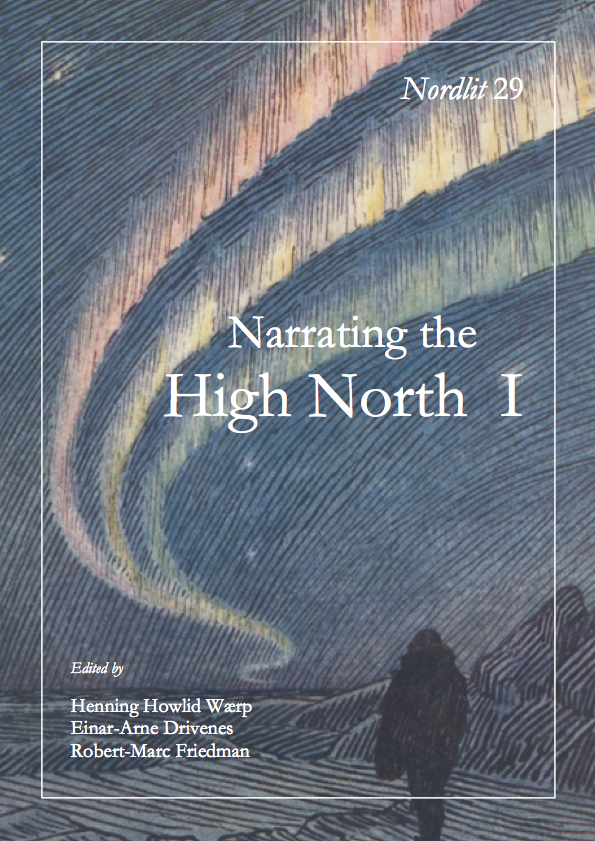
Narrating the High North I
No. 29 (2012)Edited by Henning Howlid Wærp, Einar-Arne Drivenes, and Robert-Marc Friedman. Cover image by Fridtjof Wedel-Jarlsberg Nansen.
Nordlit 29 er viet til konferansen ‹Narrating the High North›, som ble arrangert i Longyearbyen 6.–9. september 2011, i forbindelse med Nansen-og-Amundsen-året 2011. Arrangører var Svalbard museum, Tromsø museum og HSL-fakultetet ved Universitetet i Tromsø. Konferansen hadde samme tittel som forskningsgruppen som står bak: ‹Narrating the High North›, et tverrfaglig prosjekt for nordområdestudier med fokus på politikk, samfunn og kultur. For å forstå de grunnleggende endringsprosessene som skjer i nordområdene når det gjelder politikk, økonomi og kultur, ønsker forskningsgruppen å tydeliggjøre, synliggjøre og fornye den forskningen som gjøres ved Universitetet i Tromsø. Vi ønsker å styrke den komparative dimensjonen i forskningen og forsterke det internasjonale forskernettverket. Grunnstammen i ‹Narrating the High North› er tre etablerte forskningsprosjekter som arbeider med polar- og nordområdepolitikk, arktisk litteratur og nordlysforskningens historie: [i] ‹Norsk polarpolitikk 1870–2014›; [ii] ‹Arktiske diskurser›; og [iii] ‹Making Sense of the Aurora: Historical Studies of the Northern Lights in Scientific and Cultural–Political Contexts›. […] En rekke samfunns- og humanistiske fag er representert i ‹Narrating the High North›—dokumentasjonsvitenskap, historie, kulturfag, litteraturvitenskap (tysk, fransk, samisk, engelsk, nordisk og allmenn litteraturvitenskap), religionsvitenskap, statsvitenskap og vitenskapshistorie. Forskningsgruppen inkluderer også ansatte ved andre avdelinger ved UiT og eksterne institusjoner. ‹Narrating the High North› er ledet av Einar-Arne Drivenes, Robert-Marc Friedman og Henning Howlid Wærp. God lesning! -
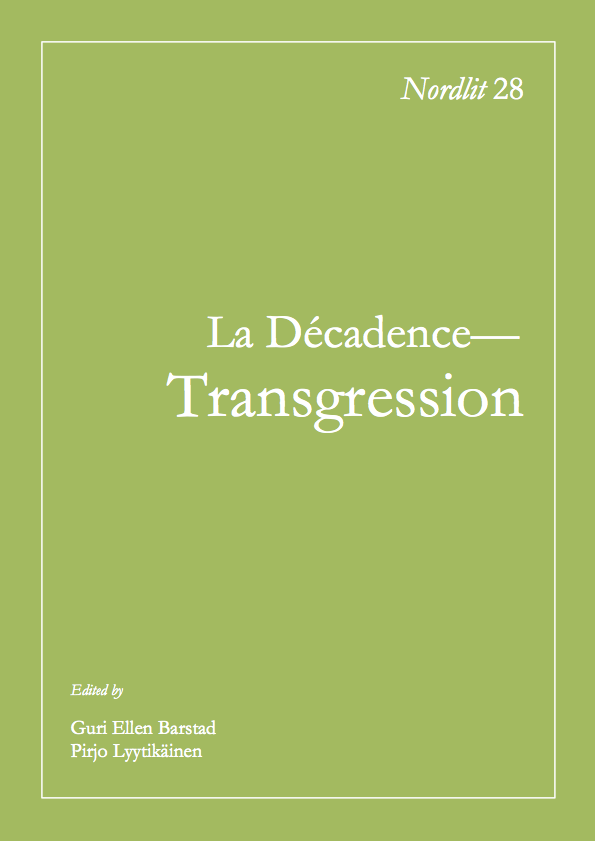
La Décadence ou une Esthétique de la Transgression
No. 28 (2011)Edited by Guri Ellen Barstad and Pirjo Lyytikäinen (Helsinki).
Nordlit 28 consists of twenty-one articles on Decadence. They are based on papers that were presented at the conference ‘The Decadence or an Æsthetic of Transgression—La Décadence ou une Esthétique de la Transgression’, which took place June 9–12, 2010, at the Faculty of Humanities, University of Tromsø. Thirty scholars from eleven different countries participated in the conference. The aim of the conference was to examine and interpret the provocative aspects and the varieties of transgression in Decadent literature. This meant, at the same time, questioning the nature of these transgressions. It seemed legitimate to ask to what extent Decadent literature can be considered as captive of its age, in that it recycled and affirmed prevalent prejudices; for example in regard to women, homosexuality and race. […] Literary Decadence was one of the varied discourses of decay of the late 19th century, outlining in different ways the presumably inevitable decaying stage of Western civilization. These discourses addressed in like manner the threats of modern technology, theories on the spiritual and physical degeneration of the human race, and the metaphysical pessimism of fashionable philosophers. […] The discourse most characteristic of Decadence differs from naturalistic depictions of decay by its shift into fantasy and internalisation. Joris-Karl Huysmans’ novel A rebours (1884) demonstrated this transition and served as a compilation of the characteristics of Decadence. In Decadent prose, the protagonists (mainly civilized male intellectuals) reflect on their own state of decadence, choosing transgression, pleasure and decay, while in Naturalism environmental and genetic determination made tragic victims out of the principal characters (usually common people or women). There is a provocative aspect to æstheticising the evil and the ugly. ‘Épater le bourgeois’, the tendency to shake and overturn prevailing values, is an aspect of Decadence and a strategy which has remained important in modern art. On the other hand, the provocative nature of Decadence is often associated with resignation: It is resigned to inevitable decay rather than seeking to change the world. Weakness, fatigue and illness, of which the decadent era and its people suffer in the visions of Decadence, can only lead to destruction. Dreaming of transgressions sometimes is enough for the protagonists of Decadent narratives. But the authors managed, at least to some extent, to provoke audiences although many of them were marginal figures in the literary field of their time. Have a pleasant read. -
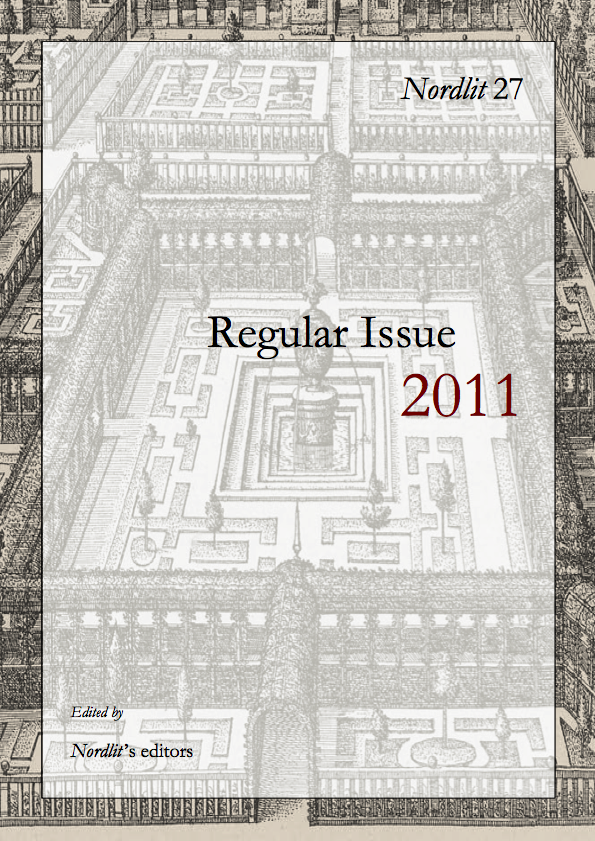
Regular Issue 2011
No. 27 (2011)Edited by Nordlit’s editors. Garden chalcography: Druckgrafik aus der © Sammlung Albrecht Haupt der Technische-n Informationsbibliothek (TIB); Haupt 1247—Hans Vredeman de Vries [1527–1607]. Hortorum viridariorumque elegantes et multiplices formæ (1568–1583) [–1615]. Antwerp/Cologne. See also page 8 in Nordlit 27: ‘Hage on hage’.
Nordlit 27 er et åpent nummer og artikler publiseres fortløpende. -

Regular Issue 2010
No. 26 (2010)Edited by Nordlit’s editors. Photography: © Nasjonalbiblioteket—Cora Sandel [1880–1974] in Paris (1906–1921); inventory number unknown; via Store norske leksikon.
Nordlit 26, som åpnet 19. oktober 2010, er det første nummeret som er produsert som rent ‹Open Access›. Det inneholder seks artikler: Bartnæs skriver om metaforikk i Cora Sandels Alberte-bøker, Isomaa om det sentimentale i finsk og nordisk realisme, Kruszelnicki om Hamsuns På turné og Lindgren Leavenworth om representasjoner av det nordlige i to engelskspråklige reiseskildringer. Svein Aamolds artikkel «Statuens indre liv: En tolkning av Juan Muñoz’ kunst» er med, og så tidsskriftets første artikkel på spansk—som siste artikkel i denne utgaven! Vi ønsker god lesning. -

Hamsun-nummer
No. 25 (2009)Edited by Michael Schmidt and Henning Howlid Wærp. Blurb portrait image by Olav Gulbransson, Atelier Karl Anderson–Augusta Sand, Christiania.
Nordlit 25 var det siste nummeret som utkom på papir. Fra nå av er Nordlit et ‹Open-Access›-tidsskrift som blir utgitt i samarbeid med Septentrio Academic Publishing, en infrastrukturtjeneste ved Universitetsbiblioteket i Tromsø. Gerd Bjørhovdes artikkel om George Egerton i nummer 25 ble bidrag nummer 2500 i Munin! I forbindelse med Knut-Hamsun-jubileet 2009 er høstens nummer av Nordlit viet Hamsuns forfatterskap. Vi trykker bl. a. her artikler fra fire av årets Hamsun-konferanser: i St. Petersburg, i Bonn, i Oslo og i Bø i Vesterålen. Videre er to av artiklene basert på foredrag holdt ved SASS-konferansen i Madison, Wisconsin, i mai 2009. I tillegg kan vi by på en Hamsun-disputas fra Universitetet i Tromsø, 17. juni 2009: Linda Hamrin Nesby forsvarte da avhandlingen ‹En analyse av Knut Hamsuns romaner Pan, Markens Grøde og Landstrykere med utgangspunkt i kronotopbegrepet›. Samtidig fikk vi lyse ut en ny Hamsun-stipendiatstilling, så flere Hamsun-disputaser vil komme i Tromsø i fremtiden. Vi ønsker god lesning. -

The Cultural Production and Negotiation of Borders
No. 24 (2009)Edited by Helène Whittaker von Hofsten, Michael Schmidt, and Anne Heith. Photography: Cox, Peter. 2008. Juan Muñoz: A Retrospective, exhibition catalogue. London: Tate Publishing, 22–23—Juan Muñoz’ [1953–2001] The Wasteland (1987) (1986) [part]. Courtesy Collection of Elayne and Marvin Mordes, USA; © The Estate of Juan Muñoz. Read more: Aamold, Svein. 2010. ‘Statuens indre liv’, Nordlit 26, 71–88 [75].
Nordlit 24 presents papers that were all first given at the 2008 European Conference of the Association of Borderlands Studies, held in Kirkenes in Northern Norway, September 11–13, 2008, on the borders of the Arctic and in the ‘Finnish–Kven–Norwegian–Russian–Sámi’ borderland. […] The theme of the conference was a wide one: the ‘Cultural Production and Negotiation of Borders’. This theme was intended as an acknowledgement of the increasing focus which has been given recently by geographers and historians to the role of cultural production and negotiation in social and territorial bordering processes. The ongoing spate of movies, documentaries, art projects, novels, websites, festivals and tourist attractions concerning borders has given this aspect of bordering renewed topicality and economic importance, and has attracted research both in the humanities and in the social sciences. […] The essays in this issue of Nordlit focus on how historical and contemporary border discourses, expressive and æsthetic representations, are generated, circulated, and interpreted in both local and global contexts. We have also sought to include material that raises questions about the nature of æsthetic discourses and how their specific form of intervention, production and negotiation, works through various forms of representational displacement, with the border not always being described in a directly recognizable or transparent way. These displacements include narrative, fictional, and figural re-inscriptions of the border. Æsthetic discourses thus make discussion of imaginary and symbolic borderlands necessary, often emphasizing the layers of memory in the ‘borderscape’. Within a discursive approach to borders it is important to acknowledge the role displacement has to play in the cultural production and formation of borders, even territorial borderlands such as the one in which the conference was set. Have a pleasant read. -

Arctic Discourses
No. 23 (2008)Edited by Anka Ryall, Johan Schimanski, and Henning Howlid Wærp. Cover image by Fridtjof Wedel-Jarlsberg Nansen.
Nordlit 23 contains twenty-eight articles on Arctic discourses, based on paper presentations from the conference ‘Arctic Discourses 2008’, at the Faculty of Humanities, University of Tromsø. The conference, which took place from February 21 to February 23, 2008, gathered sixty-five scholars from fifteen countries on Arctic issues within literary criticism, art history, cultural studies and other disciplines in humanities. Another eighteen articles from the conference will be published in a forthcoming book next year. […] Accounts of Arctic or sub-Arctic areas and the people living there represent voluminous material produced both within these areas and in other parts of the world, and in many languages and many different genres, both fictional and non-fictional. These accounts might have been in keeping with Arctic realities to a greater or lesser degree, and some are purely imaginative or speculative, but in any case they constitute an important element of the historical perception of the Arctic and the Far North. Together they represent what we may call Arctic discourses. ‘Arctic Discourses’ is a research project at the Faculty of Humanities, University of Tromsø, co-financed by the Research Council of Norway and the University of Tromsø. Have a pleasant read. -

Arktiske diskurser
No. 22 (2007)Edited by Michael Schmidt, Stian Sundell Torjussen, and Helène Whittaker von Hofsten. Cover image by Fridtjof Wedel-Jarlsberg Nansen.
Nordlit 22 har som tema ‹Arktiske diskurser›, og de fleste artiklene kommer fra et forskningsprosjekt ved samme navn ved Det humanistiske fakultetet, Universitetet i Tromsø. Prosjektet er et samarbeid mellom litteraturforskere innenfor fagene engelsk, nordisk, allmenn litteratur, samisk, fransk, russisk og tysk ved Universitetet i Tromsø, i tillegg til aktive samarbeidspartnere ved Umeå Universitet, København Universitet, Amsterdam Universitet, Wien Museum, og University College, London. Den arktiske litteraturen omfatter et stort materiale som representerer ulike sjangre, skrivemåter og framstillingsformer, både skjønnlitterære og dokumentariske, på ulike nasjonalspråk. Dette tekstmaterialet er og har vært en viktig faktor i konstitueringen av våre begreper om natur og folk i ‹den nordlige verden›. Å kartlegge, beskrive og analysere litterære representasjoner av det arktiske i ulike fremstillinger—såvel som i ulike historiske epoker—er målet for prosjektet ‹Arktiske diskurser›. De jobber både med skjønnlitteratur og sakprosa, men innfallsvinkelen er i all hovedsak litteraturvitenskaplig. Reiseskildringer er en sentral del av materialet. Tidsmessig er prosjektet avgrenset bakover i tid til ca. 1840. Vi ønsker god lesning. -

Centre–Periphery—The Avant-Garde and the Other
No. 21 (2007)Edited by Per Bäckström, Helène Whittaker von Hofsten, Tanja Kudrjavtseva, and Michael Schmidt. Cover painting by Gösta Adrian-Nilsson [GAN].
Nordlit 21 has as its theme ‘Centre–Periphery—The Avant-Garde and the Other’ and is the outcome of a conference of the same name that took place in Tromsø on November 23–24, 2006. The peripheral location of this conference was evident to the many participants in the midwinter darkness of the Arctic. The theme of ‘the Other’ is also deeply embedded in Tromsø, symbolized by prolific Sami Studies at the university, but it was and is thematized as well by a painting by one of the foremost Swedish avant-gardists, Gösta Adrian-Nilsson [GAN]—‘Indianstrid’ (Indian Combat), reproduced on the conference posters and on the cover of this issue. As a homosexual from Scania in the South of Sweden, GAN was doubly excluded by the Centre, Stockholm, but he also often painted the Other: sailors, Indians and exotic creatures such as panthers. In this respect, he seemed the perfect theme for such a conference. […] The conference was a success, judging by the feedback from participants after the conference. It is therefore all the more pleasurable to be able to present a first collection of contributions to the conference, expanded with some additional essays and reviews, in this issue of Nordlit only half a year after the conference. A second collection, which focuses on the relation between avant-garde and periphery, will follow. I hope that the rich variety of articles on the themes of the conference will be of interest for scholars in all æsthetic fields. The articles are divided into three main categories: Firstly, there is a section containing theoretical investigations; this is followed by a section discussing the relation between different avant-gardes; finally, there is a section presenting avant-garde artists from different peripheries. Have a pleasant read. -
Regular Issue 2006
No. 20 (2006)Edited by Helène Whittaker von Hofsten, Tanja Kudrjavtseva, and Michael Schmidt.
Nordlit 20 er et åpent nummer og artikler publiseres fortløpende. -

Grenser
No. 19 (2006)Edited by Helène Whittaker von Hofsten and Linda Hamrin Nesby. Photography: Benezra, Neal, and Olga M. Viso. 2001. Juan Muñoz, exhibition catalogue. Washington D.C.: Hirshhorn Museum and Sculpture Garden, The Art Institute of Chicago, and University of Chicago Press, 99—Juan Muñoz’ [1953–2001] The Prompter (1988). Courtesy Collection of Elayne and Marvin Mordes, USA; © The Estate of Juan Muñoz. Read more: Aamold, Svein. 2010. ‘Statuens indre liv’, Nordlit 26, 71–88 [76].
Nordlit 19 reflects Johan Schimanski’s wish “to propose a theoretical basis for a border poetics by thinking through the border not in its static and mapped configurations, but from the processual and embodied perspective of the bordercrossing narrative. [Schimanski suggests] […] a set of seven processes involved in the act of crossing a border, implicating in turn a model of five border planes with which to organize a border reading” (41). Also Morten Bartnæs and Per Bäckström and Henrik Jochumsen and Silje Solheim Karlsen and Ruben Moi and Linda Hamrin Nesby and Casper Hvenegaard Rasmussen and Jan T. Schlosser and Stian Sundell Torjussen and Stephen Wolfe and Henning Howlid Wærp ponder over borders (crossings) and boundaries (crossings)—in physical, as well as metaphorical senses. The shared working vocabulary includes terms such as ‘hybridity’, ‘liminality’, and ‘negotiation’. Have a pleasant read. -

Regular Issue 2005
No. 18 (2005)Edited by Helène Whittaker von Hofsten, Tanja Kudrjavtseva, and Linda Hamrin Nesby. Book cover: Elfriede Jelinek’s first publication; document copy of ‘Der Viergroschenbogen Folge 76—Blätter für zeitgenössische Literatur und Graphik’ retrieved from Elfriede-Jelinek-Forschungszentrum via Die Sammlungen an der Universität Wien. Jelinek, Elfriede. 1967. Lisas Schatten. München/Würzburg/Bern: Relief-Verlag Eilers. Read more: Theodorsen, Cathrine. 2005. ‘Jelinek und die Tradition’, Nordlit 18, 235–257.
Nordlit 18 er et åpent nummer og artikler publiseres fortløpende. -

Til minne om Øystein Rottem (1946–2004)
No. 17 (2005)Edited by Per Bäckström, Linda Hamrin Nesby, and Tanja Kudrjavtseva. Photography: Ørjan Ellingvåg | Dagbladet; see page 5.
Nordlit 17 er i sin helhet viet Øystein Rottems minne. Rottem, som var en av Norges ledende litteraturkritikere og formidler innenfor et bredt litterært felt, hadde et langt yrkesengasjement ved Humanistisk Fakultet ved Universitetet i Tromsø bak seg, da han forlot byen i 1984. Han bygde seg raskt opp et stort internasjonalt nettverk, og lot København fremstå som base, men pleide like til det siste kontakten med fagmiljøet ved Universitetet i Tromsø, både som forsker, foredragsholder, sensor og privatperson. Minneskriftet spenner vidt i sin samling av artikler om norske og utenlandske forfattere, litteraturkritikk og poesi. Artiklene er ment å anskueliggjøre Øystein Rottems åpne, inkluderende og tolerante syn på kunst og litteratur, samtidig som vi håper å illustrere noe av den aktiviteten som foregår ved Humanistisk Fakultet ved Universitet i Tromsø. Vi håper og tror at han ville vært glad over å se at så mange ulike representanter innenfor akademia sysler med spørsmål og innfallsvinkler han selv anså som interessante og meningsfulle. Vi ønsker god lesning. -
Regular Issue 2004
No. 16 (2004)Edited by Per Bäckström, Linda Hamrin Nesby, and Cathrine Theodorsen.
Nordlit 16 er et åpent nummer og artikler publiseres fortløpende. -
Northern Minorities
No. 15 (2004)Edited by Per Bäckström, Kristin Jernsletten, and Cathrine Theodorsen. Cover image by Guttorm Guttormsgaard.
Nordlit 15 notes: In today’s academic study in the field of literature, some of the main focuses are on identity, nationality and minorities. Inspired by the PEN conference on this theme, held in Tromsø in September 2004, this issue is therefore dedicated to the subject of ‘minorities’. On the editorial board we perceived this conference as an excellent opportunity of presenting articles from the field of literature to ‘literature’ itself, i.e. the authors from all over the world gathered in Tromsø for one week. We announced a call for papers to various minority studies departments in Tromsø and the rest of the world at the end of 2003. An especially enthusiastic response came from one particular minority study department, that of Sámi literature—as a result, this theme forms the main part of this issue, which suits this Arctic publication well. In addition, there are articles on the topics of minorities, e.g. North American Indians, Russian Nenets and the Traveller people of Scandinavia. All in all, our sincere hope is that this issue of Nordlit will be of interest to everyone studying identity, nationality and minority—indeed, anyone with an interest in literature in general. Have a pleasant read. -
Regular Issue 2003
No. 14 (2003)Edited by Cathrine Theodorsen and Henning Howlid Wærp.
Nordlit 14 er et åpent nummer og artikler publiseres fortløpende. -
Festskrift til Nils Magne Knutsen
No. 13 (2003)Edited by Cathrine Theodorsen and Henning Howlid Wærp.
Nordlit 13 gratulerer! Rett før dette festskriftet skulle gå i trykken kunne vi lese i avisene at Nils Magne Knutsen hadde mottatt Tromsø kommunes kulturpris for 2002. Det er ikke ofte en universitetsmann er påtenkt i slike tilfeller (Lene Marlin har fått prisen før), men den utadrettete virksomhet Nils Magne Knutsen hele tiden har representert er da også et særtilfelle. […] [Han] ble ansatt som stipendiat i nordisk litteratur ved Universitetet i Tromsø i 1974; senere ble han amanuensis og førsteamanuensis. 12. februar 2003 fyller han 60 år. I den forbindelse ville vi gjerne vie et særnummer av Nordlit, fakultetets eget litteraturtidskrift, til ham. Førsteinnbydelsen til å skrive i festskriftet gikk ut i februar 2002, og etter kort tid hadde vi så mange navn på lista at vi måtte slutte å spørre flere. Det var mange som ville hylle Nils Magne Knutsen, med en fagartikkel eller med en personlig hilsen. Første del av festskriftet består i tråd med dette av personlige hilsener, mens andre del inneholder artikler om emner som vi tror Nils Magne vil være interessert i. På vegne av redaksjonen, kolleger og venner: Henning Howlid Wærp. Vi ønsker god lesning. -
Regular Issue 2002
No. 12 (2002)Edited by Atle Skaftun, Cathrine Theodorsen, and Henning Howlid Wærp.
Nordlit 12 er et åpent nummer og artikler publiseres fortløpende. -
1700-tallet og romantikkens utspring
No. 11 (2002)Edited by Cathrine Theodorsen, Atle Skaftun, and Henning Howlid Wærp.
Nordlit 11 er i sin helhet viet til 1700-tallskonferansen. Norsk selskap for 1700-tallsstudier arrangerte sin andre nasjonale konferanse i Tromsø 20.–22. september 2001, med temaet ‹1700-tallet og romantikkens utspring›. Konferansen ble holdt ved Det humanistiske fakultet og organisert av Johan Schimanski, Anka Ryall, Rune Hagen, Erik Lundestad, Marie-Theres Federhofer og Michael Schmidt. 39 forskere, stipendiater og studenter deltok, inklusiv 3 utenlandske hovedtalere: Bengt Algot Sørensen (Syddansk universitet, Odense), Chloe Chard (Getty Foundation, Los Angeles) og Marilyn Butler (Exeter College, Oxford). De 21 innleggene var samlet i grupper under stikkordene det nordlige, vitenskap/filosofi, nasjonal/kosmopolitisk, Rousseau I, Rousseau II, ideologi/sjanger og opplysning/romantikk. Parallelt med konferansen ble det avholdt et forskerutdanningskurs. I tillegg arrangerte Universitetsbiblioteket i Tromsø utstillingen ‹Kunnskap og landskap i 1700-tallets Europa›, der man kunne se utstilt deler og utdrag fra bibliotekets eksemplar av Encyklopedien, samt bilder og tekster omkring landskapsdesign i 1700-tallets Europa. Filosof Viggo Rossvær holdt åpningsforedrag. Vi ønsker god lesning! -
Identitet
No. 10 (2001)Edited by Amilcare Cassanello, Atle Skaftun, Cathrine Theodorsen, and Henning Howlid Wærp.
Nordlit 10 omhandler identitet og identifikasjon som har blitt sentrale forskningsfelt de siste årene. En årsak til dette er at oppfatninger om hva identitet er, har forandret seg. I førmoderne tid ble identitet definert etter ytre markører, som hudfarge eller klesdrakt, men senere er det utviklet teorier om mennesket som en mer helhetlig størrelse. Markørene skiftet til medfødte trekk og egenskaper, dvs. en kjerne av personlighet som man oppfattet som et menneskes statiske egenskap. Identitet ble således definert som en homogen enhet, det var med andre ord spørsmål om essensialisering av menneskets subjekt. Tanken bak det enhetlige subjektet var å holde ved like religiøse, økonomiske og vitenskapelige prosesser knyttet til modernitet. Denne oppfatningen av menneskets identitet som en enhetlig størrelse fikk kritikk allerede rundt forrige århundreskifte. Blant annet filosofer innen marxistisk tankeretning og psykoanalytiske tanketradisjoner problematiserte menneskets subjekt, og de knyttet tanken om identitet til samfunnsmessige, sosiale og psykologiske konstruksjoner. Senere på 1900-tallet har den postmoderne og postkoloniale forskningen ført til nye synspunkter rundt oppfatningen av identitet. I dag råder en oppfatning av identitet som noe foranderlig, flytende og motsetningsfylt. […] Jonathan Rutherford hevder at identitet uttrykker et punkt der vår fortid møter de sosiale, kulturelle og økonomiske relasjonene vi lever i. Den er altså i en konstant bevegelse. I tillegg blir verden påvirket av både kulturell og etnisk hybriditet, såkalt globalisering, samtidig som kulturene går mot kulturell universalitet. Denne tendensen kan forårsake en overlapping av lokale og nasjonale kulturer, men kan også bidra til større ønske om å utrykke diversitet. I dagene 29. november til 1. desember 2001 gikk seminaret «Å studere identitet—en tverrfaglig metodisk utfordring» av stabelen. Vi ønsker god lesning! -
Regular Issue 2001
No. 9 (2001)Edited by Amilcare Cassanello, Anniken Greve, Atle Skaftun, and Henning Howlid Wærp.
Nordlit 9 er et åpent nummer og artikler publiseres fortløpende. -
Hamsun i lys av Bakhtins teorier
No. 8 (2000)Edited by Amilcare Cassanello, Anniken Greve, Atle Skaftun, and Henning Howlid Wærp.
Nordlit 8 er i sin helhet viet den russiske tenkeren Mikhail M. Bakhtin. De fleste bidragene—de seks første—skriver seg fra et seminar i Tromsø i november 1999, ‹Polyfoni og kronotopi›, som hadde som siktemål å utforske det metodiske potensialet i Bakhtins tenkning. For å gjøre det valgte vi Hamsuns noveller som et avgrenset materiale for de enkelte bidragene og seminardiskusjonen. Av den grunn kan dette nummeret av Nordlit også dels leses som et ‹Hamsun-nummer›. Fire av bidragene er lesninger av Hamsun-tekster i lys av Bakhtin. Vi ønsker god lesning. -
Regular Issue 2000
No. 7 (2000)Edited by Amilcare Cassanello, Anniken Greve, Atle Skaftun, and Henning Howlid Wærp.
Nordlit 7 kommer med tre artikler om poesi. Anniken Greve skriver om forholdet mellom sted og poesi, der hun drøfter ‹stedsdiktning› eller lokalt forankret poesi innenfor engelsk, irisk og norsk tradisjon. Henning Howlid Wærp gir en oversikt over det norske lyrikåret 1999, der han også ser på utviklingslinjer i det sene 1990-tallets norske poesi. Per Bäckström gir en drøftende presentasjon av Garrett Stewarts Reading Voices: Literature and the Phonotext fra 1990, der Stewart lanserer en analysemåte av det fonemiske nivået i poesien. Denne lesemåten er spesielt anvendelig på konkretisme og annen eksperimentell poesi, mener Backström. Vi har med to artikler om nord-norsk litteratur. Ragnhild Engelskjøn gir en analyse av Liv Lundbergs roman Nybegynnerens forutsetningsløshet (1996), med spesielt fokus på det kompliserte forholdet mellom tid og rom. Kaisa Lindbach skriver om Bente Pedersens Raija-serie utfra marginalitetsteorier, der forfatterskapet blant annet plasseres i en kvensk kontekst. Linda Hamrin Nesby drøfter det relativt nye begrepet ‹hypertekst›. I aktive digitale hypertekster kan tekstsegmenter aktiveres og forbindes på stadig nye måter, men hypertekstbegrepet omfatter også struktureringsprinsipper som har gyldighet for tekster i bokform. Artikkelen utforsker bl.a. dette grenselandet mellom tekst og hypertekst, med et særlig fokus på skjønnlitteratur. Atle Skaftun tar for seg forholdet mellom de to sidestilte fortellerne i Knut Hamsuns roman Pan. Langs dialogiske veier forsøker Skaftun å påvise flerstemthet og ulike intensjonalitetsnivå i fortellerfiksjonene, med utgangspunkt i romanens utgivelseshistorie. Etter tre årganger og seks nummer bytter nå Nordlit redaksjon. De nye redaktørene er fra 1. januar 2000: Anniken Greve, Amilcare Cassanello, Atle Skaftun og Henning Howlid Wærp. Vi ønsker god lesning. -
Rhetoric across the Humanities
No. 6 (1999)Edited by Astrid Sollid Brokke, Rolf Gaasland, Sandra Lee Kleppe, and Henning Howlid Wærp.
Nordlit 6 contains the papers from an interdisciplinary symposium on rhetoric held at the Norwegian Institute in Rome in October 1998: ‘Rhetoric across the Humanities’. In addition, we include the papers of Gaasland and Røstvig which were not given at the seminar, but which were written as a tribute to Roy Eriksen who celebrated his 50th birthday on October 8. The symposium was partly financed by the Faculty of Humanities, University of Tromsø, with the support of the Norwegian Institute in Rome. The organisers (Roy Eriksen and Toril Swan) wanted to bring together people who approached rhetoric from different angles. The location—Rome—could not have been more perfect; the lectures were interspersed with visits to wonderful sites such as the Campidoglio and the Villa Farnesina, with Roy Eriksen as guide. Thus rhetoric—the art of shaping words or stone or colours for the shared purpose of communicating a perspective—came before the participants’ eyes as well as their ears: a truly memorable experience. Academically, then, the participants belong in a variety of fields—consequently the present volume includes a great range of topics: art history (Hodne, Plahte Tschudi, and Aavitsland), linguistics (Breivik, Swan), literature and poetics (Eriksen, Folkestad, Gaasland, Strand Rangnes, Røstvig, Sandhaug, Visconti, and Wolfe), and political discourse (McCafferty). And the various artefacts and texts analysed similarly are the products of different eras, varying from the Late Middle Ages and the Renaissance to our own day. We hope the readers will enjoy the variety as much as the participants enjoyed the intellectual exchanges between scholars in different fields at the symposium. Have a pleasant read. -
Regular Issue 1999
No. 5 (1999)Edited by Astrid Sollid Brokke, Rolf Gaasland, Sandra Lee Kleppe, and Henning Howlid Wærp.
Nordlit 5 is an open issue which illustrates the depth and breadth of research in literary studies at the Humanities Faculty, University of Tromsø. Our guests in this issue are Hermann Pálsson from the University of Edinburgh, Ruben Moi from Harstad College, and UiT graduate student Nina Evensen. The other contributors are faculty members. The articles in this issue may be read individually or in thematic groups. The first five are about indigenous and/or minority literatures, followed by one about Eastern German literature after 1990. Two articles focus on Norwegian women writers, and one on the relationship between comparative literature and documentation studies. The final four articles are about different aspects of anglo(American) literature and culture. The reviews in this issue discuss two recent books published in Norwegian. The titles in the list of contents on the cover of this issue, however, provide the best guide to the curious reader. Have a pleasant read. -
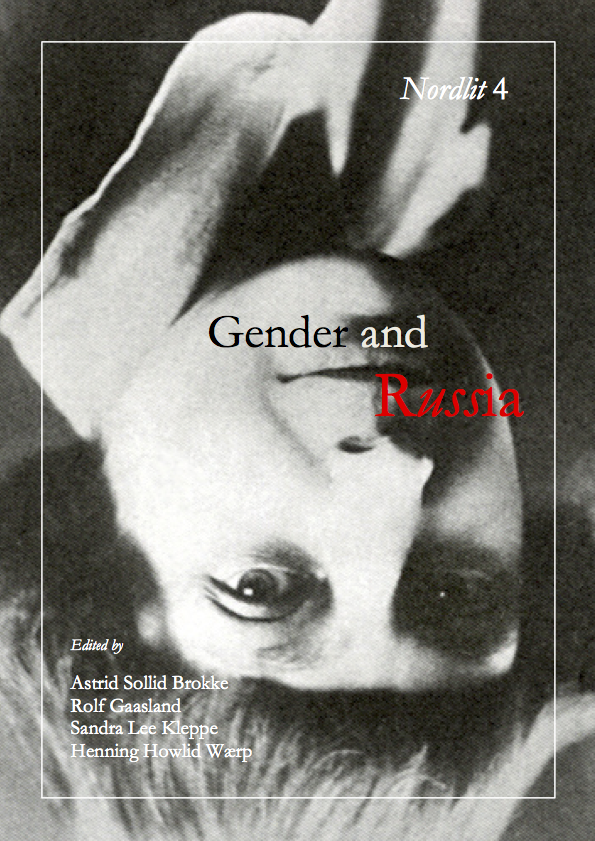
Aspects of Gender and Russian Literature
No. 4 (1998)Edited by Astrid Sollid Brokke, Rolf Gaasland, Sandra Lee Kleppe, and Henning Howlid Wærp.
Nordlit 4 bases its content on a workshop arranged and financed by the Nordic Academy for Advanced Study (NorFa) in June 1998 at the Russian Department in Tromsø. The overarching theme of the workshop was Russian literature and its representation of gender and sexuality. Doctoral students from several Nordic countries, as well as our invited senior lecturers, contributed with different approaches to our subject of investigation. Several of their papers are collected here. We apologize to our readers for the late arrival of this autumn issue; the spring number of Nordlit is just around the corner! Have a pleasant read. -
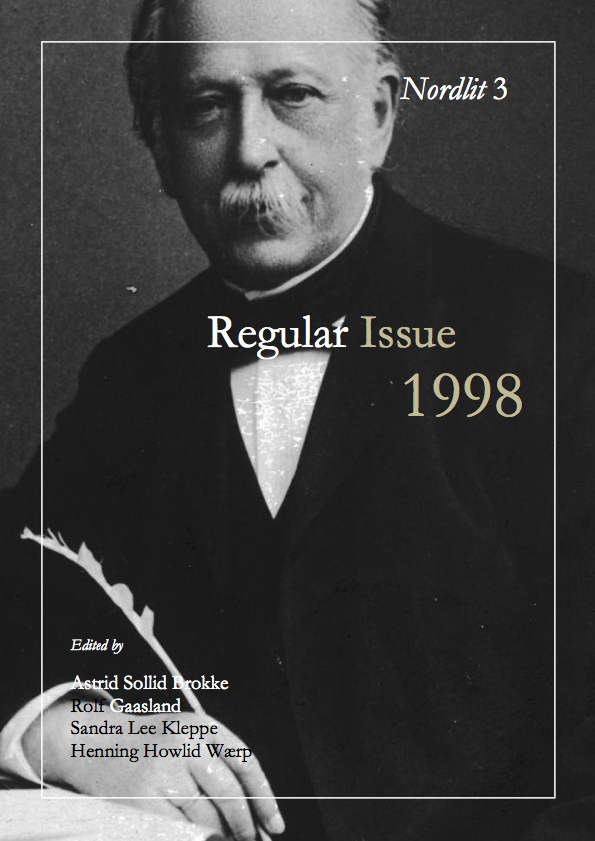
Regular Issue 1998
No. 3 (1998)Edited by Astrid Sollid Brokke, Rolf Gaasland, Sandra Lee Kleppe, and Henning Howlid Wærp.
Nordlit 3 inneholder hele tretten artikler og fem anmeldelser eller debattinnlegg. Seks av artiklene er skrevet av fakultetets litteraturlærere, to bidrag er fra gjesteforelesere (Ane Hoel; Hans Hauge), to artikler er skrevet av hovedfagsstudenter (Ane Grydeland; Linda Hamrin Nesby—som nettopp avsluttet hovedfag), i tillegg til ett professor-II-bidrag (Claes Ahlund) og ett bidrag fra en nylig ferdig stipendiat (Anniken Greve). Tre av anmeldelsene er av nye kommentarbøker til norske skjønn-litterære verker, i serien Veier til verket, beregnet på videregående skole og grunnfag. Dette er en serie som er lite kjent, men mye brukt i eksamenssammenheng, og som vi, så vidt vi vet, er de første til å bringe anmeldelser av. En tykt nummer der alt ikke vil interessere alle, men der de fleste forhåpentligvis vil finne noe å lese! Vi ønsker god lesning. -
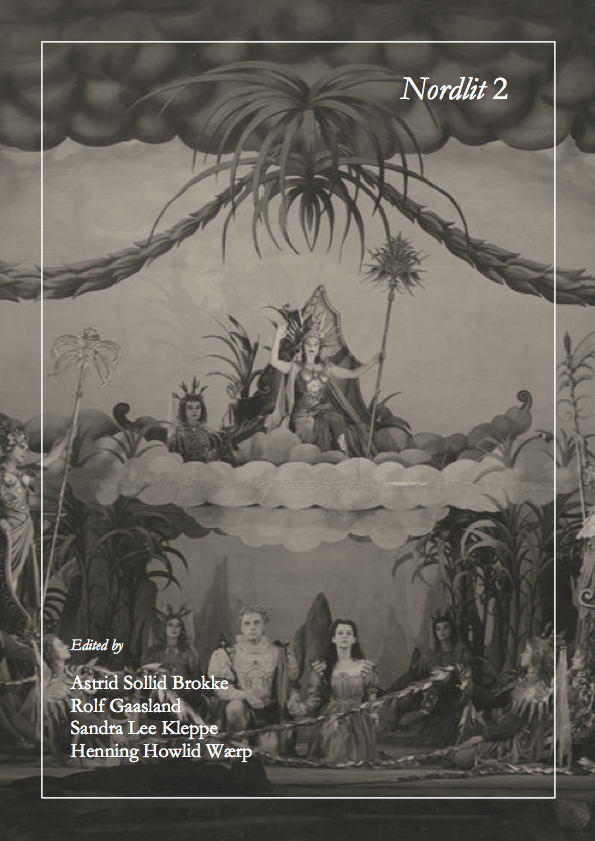
Europeisk drama, 1600–1800
No. 2 (1997)Edited by Astrid Sollid Brokke, Rolf Gaasland, Sandra Lee Kleppe, and Henning Howlid Wærp.
Nordlit 2 var i utgangspunktet reservert foredragene fra instituttseminaret ‹Europeisk drama, 1600–1800›. Av ulike grunner viste det seg imidlertid umulig å få samlet foredragene fra dette seminaret. Foreliggende nummer er likevel viet dramaet som genre, og de fire artiklene som her presenteres strekker seg i tid fra engelsk renessansedrama via russisk klassisisme til norsk dramatikk fra vårt eget århundre. […] I tillegg til de vitenskapelige artiklene inneholder Nordlit denne gangen også en avdeling med anmeldelser av både skjønn- og faglitteratur. […] Vi tar sikte på å gjøre anmeldelser til et permanent innslag i Nordlit, og håper med det å tilføre arbeidsskriftet ytterligere aktualitet. Vi ønsker god lesning. -
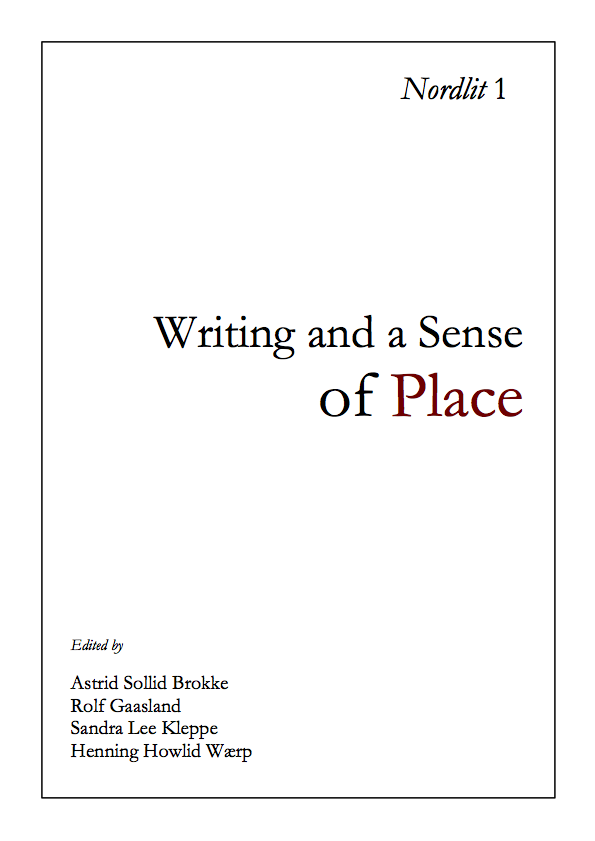
Writing and a Sense of Place
No. 1 (1997)Edited by Astrid Sollid Brokke, Rolf Gaasland, Sandra Lee Kleppe, and Henning Howlid Wærp.
Nordlit 1 has a sense of place. For four exhilarating days in August 1996 scholars from five countries, Canada, Denmark, Norway, Scotland and the United States met in Tromsø to participate in the ‘Writing and a Sense of Place’ symposium. Although they have backgrounds in a variety of fields, they share a common interest in the symposium theme. In August we had the opportunity to engage in lively discussions due to ample time allotted for this purpose. Now that the twelve papers appear in print both the participants as well as a larger audience have the opportunity to read the fruits of our efforts to elaborate on what a sense of place means and the implicit and explicit consequences this sense of place has for how we write about and live in places. Have a pleasant read.
